Staying the weekend at Interrorem Cabin near Olympic National Park is a unique and evocative rustic lodging experience we won’t soon forget.
Here is what you need to know for your own memorable trip back in time plus helpful tips for visiting Interrorem Cabin in Washington State and top things to do nearby.
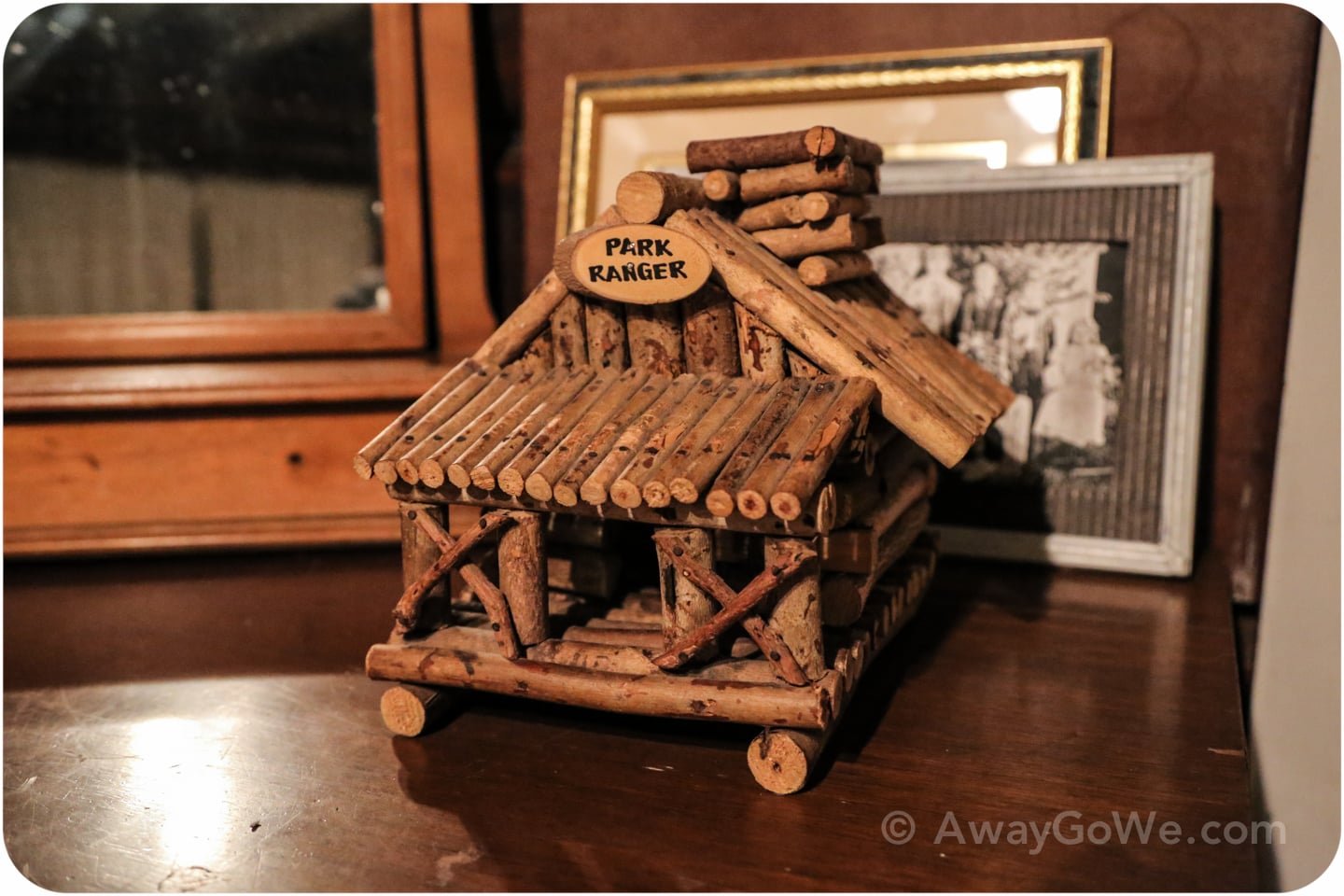
Staying at Interrorem Cabin Just Outside of Olympic National Park
Why Stay at Interrorem Cabin
Few cabin stays compare to what this historic and rustic cabin offers guests: A chance to channel your inner national park ranger and step back in time to an era long before we were all connected by the touch of a screen.
Interrorem Cabin isn’t just any rustic cabin on the Olympic Peninsula. Constructed in the spring of 1907, this humble little log cabin served as the original ranger station for the Olympic National Forest—both office and residence of the early National Park’s first official custodian, Emery J. Finch.
Electricity? Nope.
Indoor plumbing? Heck no!
This is the early 1900s in the foothills of the magnificent Olympic mountain range.
Yet, expect to face far fewer hardships than your predecessors with a slightly more modern vault toilet, easy drive-up access, and propane heater, lamps, oven/range, and refrigerator.
Still, it’s easy for one to get lost in the experience of staying in Interrorem Cabin, where time appears to have stopped somewhere around 1940.
And never mind that this rustic cabin in the woods has TERROR in the name (Interrorem), a detail not lost on early residents.
We managed somehow over two nights to avoid being stalked by Sasquatch or harassed by forest-dwelling gnomes (though a pickup full of agitated hillbillies rolled up around 11pm and parked out on the road in front of the cabin for a while…).
So, yeah, besides nearly being rounded up and dragged off into the woods, Deliverance-style, our stay was supremely serene and unforgettable in the best possible way.
Getting to Interrorem Cabin
At just under a million acres, Olympic National Park is one big place. When you add the surrounding Olympic National Forest, the size of recreational land in these here parts grows considerably.
While there are no shortage of lodging options for all tastes just outside of the park along Hood Canal and in places like Forks and Sequim (pronounced “squimm” by the way (butcher that one at your own peril!)), there aren’t a ton of options inside this vast protected area.
And if you want to stay in a cabin, well, your options are even more limited.
You can certainly venture much deeper into the Olympic Peninsula (or drive around to the north and western sides of the peninsula), but doing so takes time.
Interrorem Cabin’s convenient and accessible location makes it a perfect weekend trip from Seattle, or even from Portland.
Getting to Interrorem Cabin takes around 2-3 hours from Seattle, depending on traffic and/or ferry schedules, and 3-4 hours driving from Portland (which is what we did).
The Hood Canal route from Olympia is a really beautiful drive up 101 N (the US-101 N that hugs Hood Canal, not the US-101 N that hugs the coast 50 miles west…got to love the U.S. highway numbering system). Generally, once you get through Olympia, the traffic falls off precipitously.
We stopped for dinner along the way at the Geoduck Restaurant (pronounced Gooey-duck, for non-native Washingtonians), one of my favorite little local places up the road near Brinnon. I’d make recommendations, but everything on the menu is good.
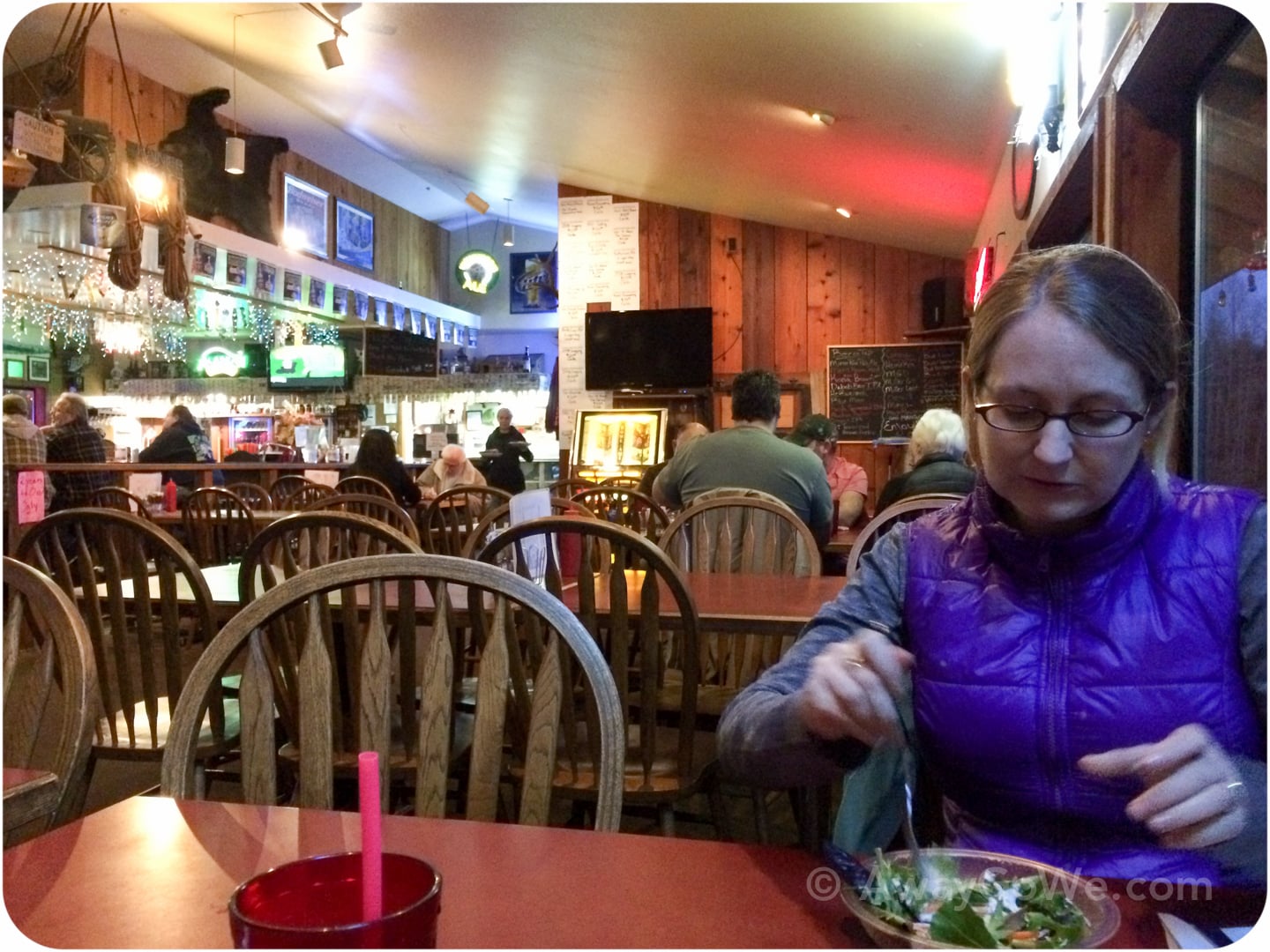
After dinner, we made our way up the lonely old Duckabush Road, in the dark, to our secluded cabin in the woods.
Arrival & Settling In
The cabin is located on a well-maintained gravel/paved road about 4 miles from Highway 101.
There’s room for parking a couple of vehicles in the compound. Outside of the compound, you have to pay the parking day fee.
Upon arrival, our first item of business (after, of course, performing the requisite ax-murderer check in all the rooms … wait a second … okay, check!) was to get the gas lanterns lit.
Yep, that’s right no electricity here.
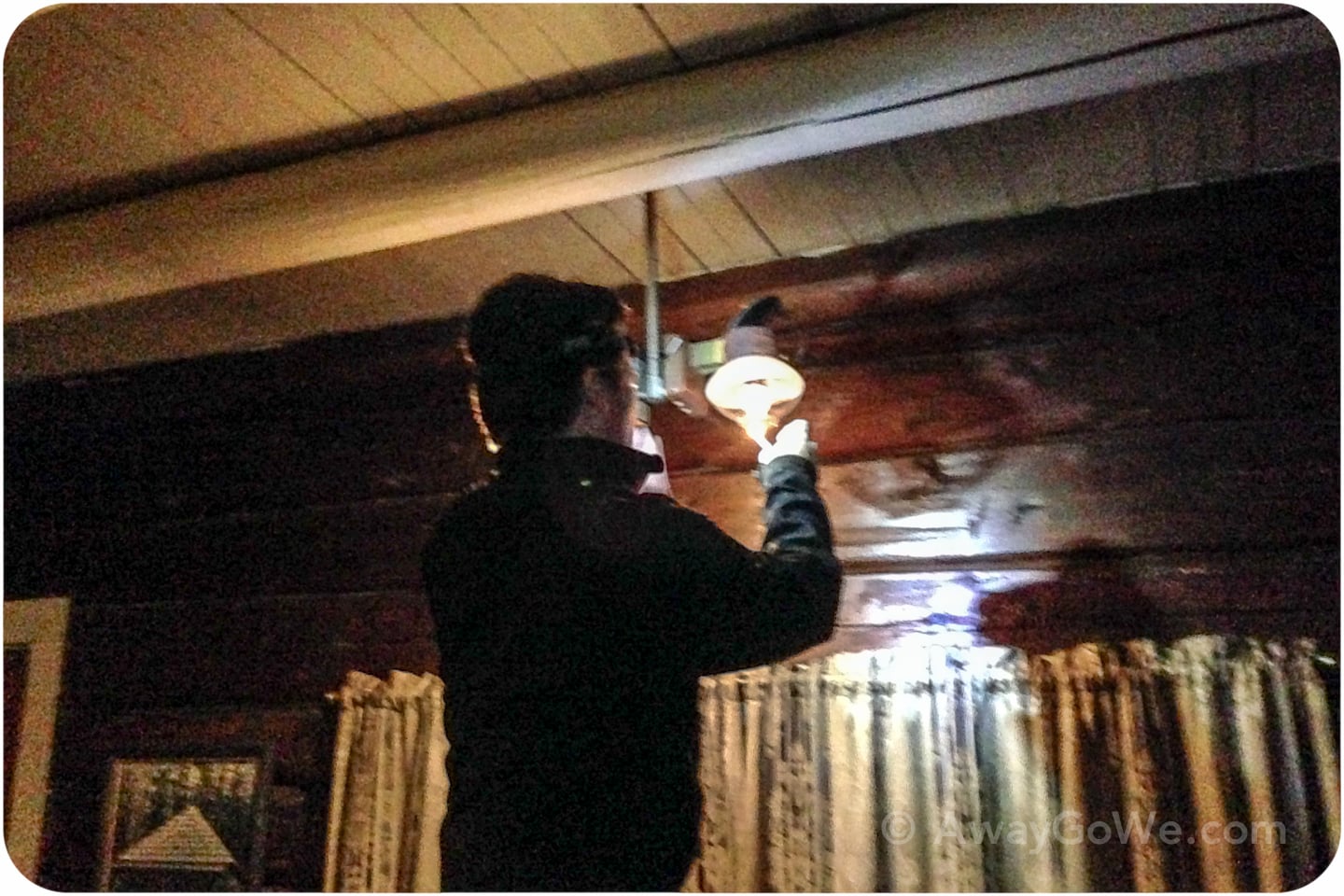
But we’ve got propane!
Fortunately, there are easy, step-by-step instructions for getting these puppies up and running. If you’ve ever lit a propane camp lantern then you won’t have a problem.
🔥 HOT TIP 🔥
Bring a couple of reliable headlamps with you. You’ll be very happy you did, particularly for using the loo after dark, but we’ll get to that.
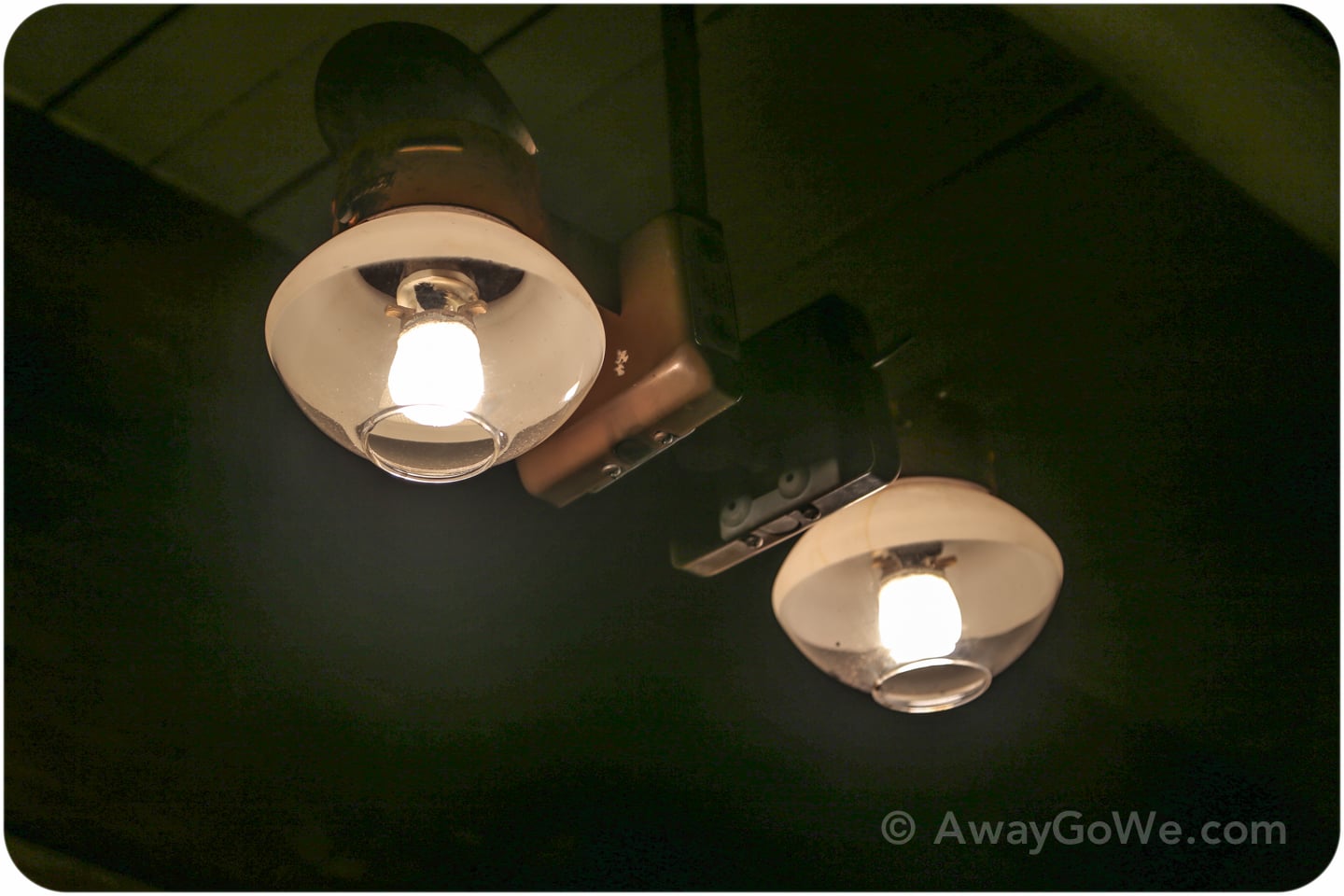
Propane lights, propane heater, and propane oven/range.
We’ve even got a propane refrigerator, which I was initially saddened by, thinking that there’s no way Ranger Finch had such luxuries—and he probably didn’t—at least not in pre-Olympic National Park 1907.
But subsequent years brought electricity and running water to the cabin, and all the mod-cons associated with such technology…
Until … they yanked them out.
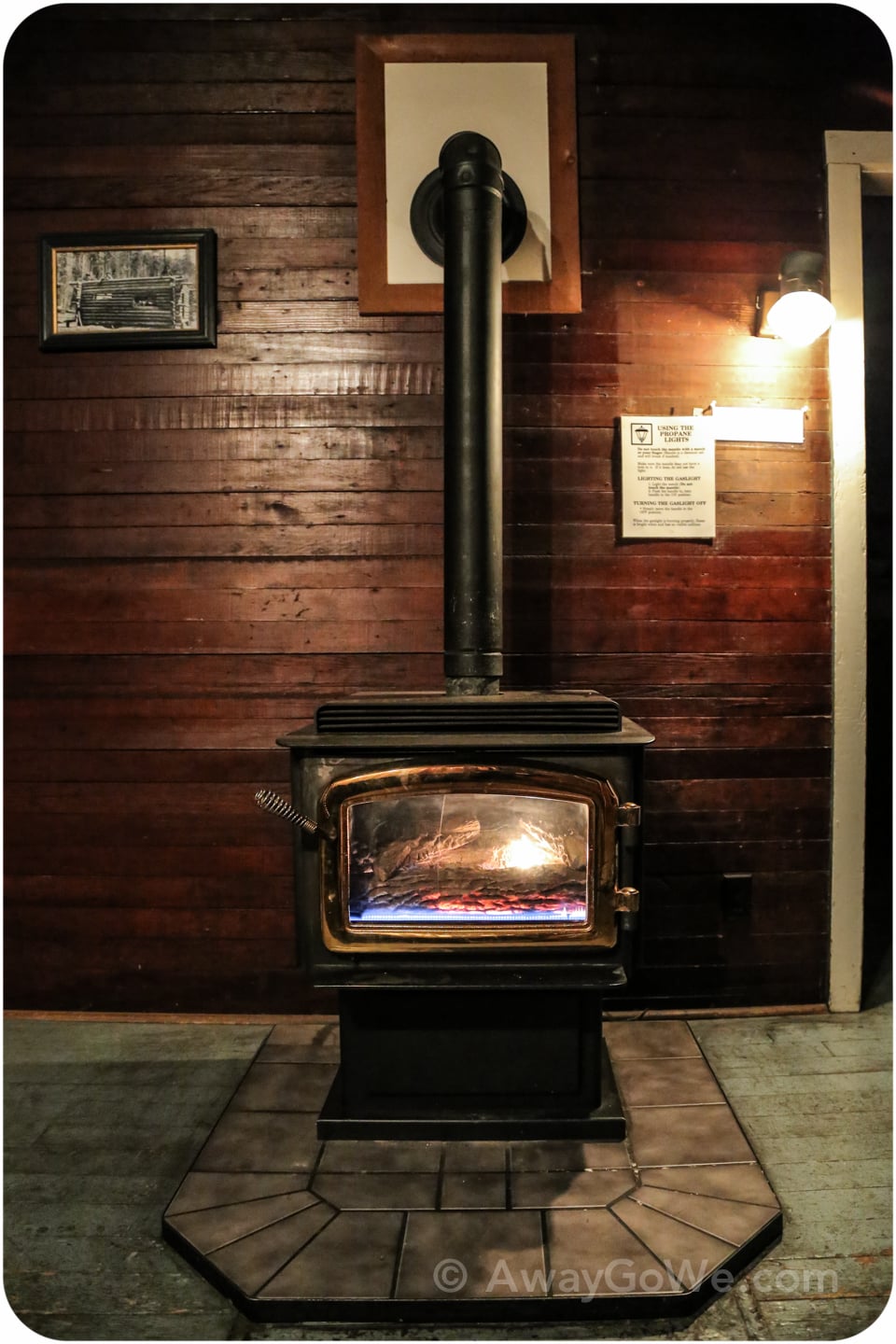
When Interrorem Cabin was eventually opened to the public as a rental, they tore all of that crazy stuff out (i.e. the electricity and running water) presumably as a cost-saving measure, but I’m also assuming to enhance the rustic feel of the cabin.
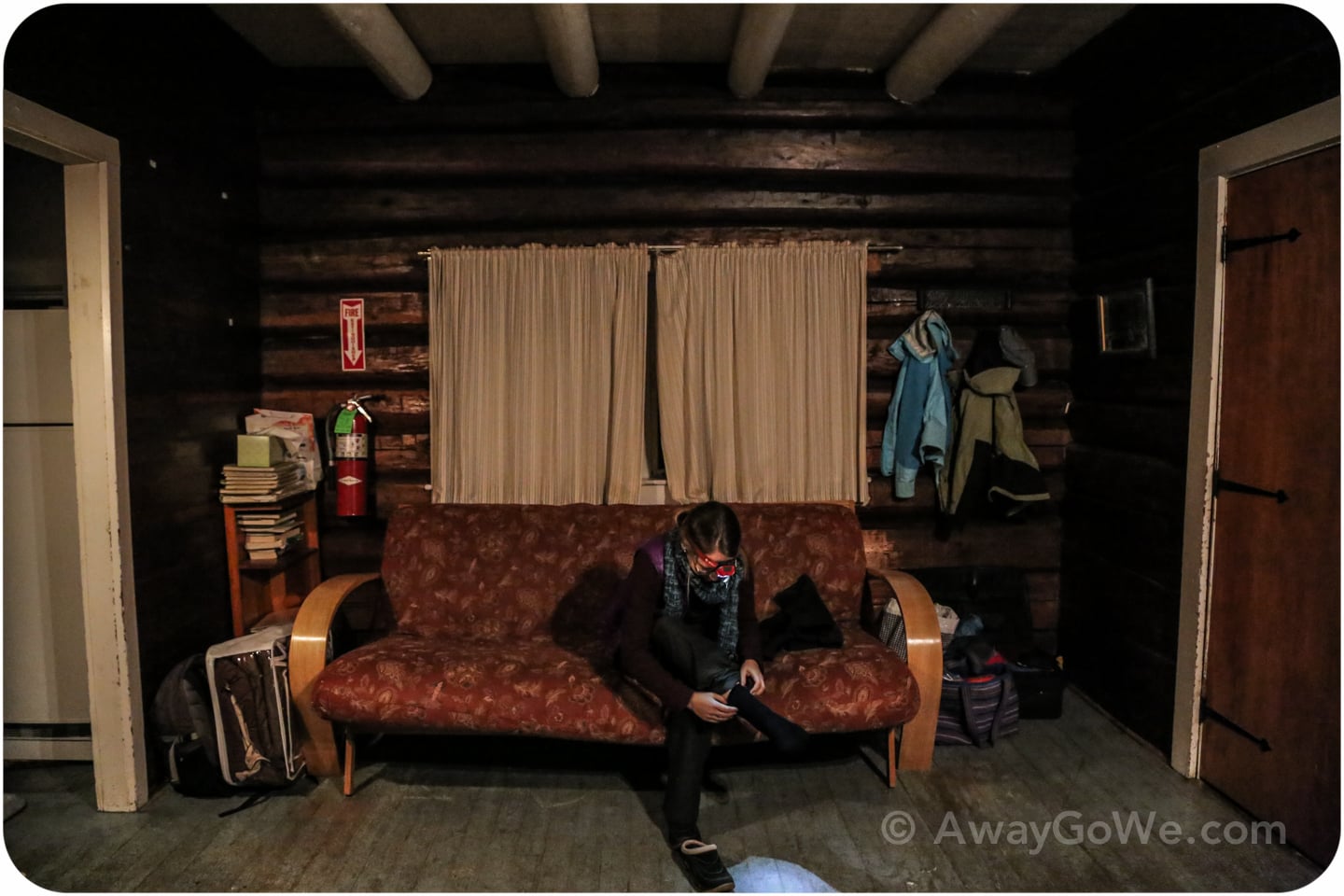
Still, because of the nice propane touches, Interrorem Cabin is a bit on the luxurious end of rustic cabins Lori and I have stayed in over the years.
No chopping wood to cook or stay warm here!
But…you do still have to pump and carry your own water from the well just outside of the cabin compound. Not a long walk, but certainly a bit of added work to cook and wash dishes.
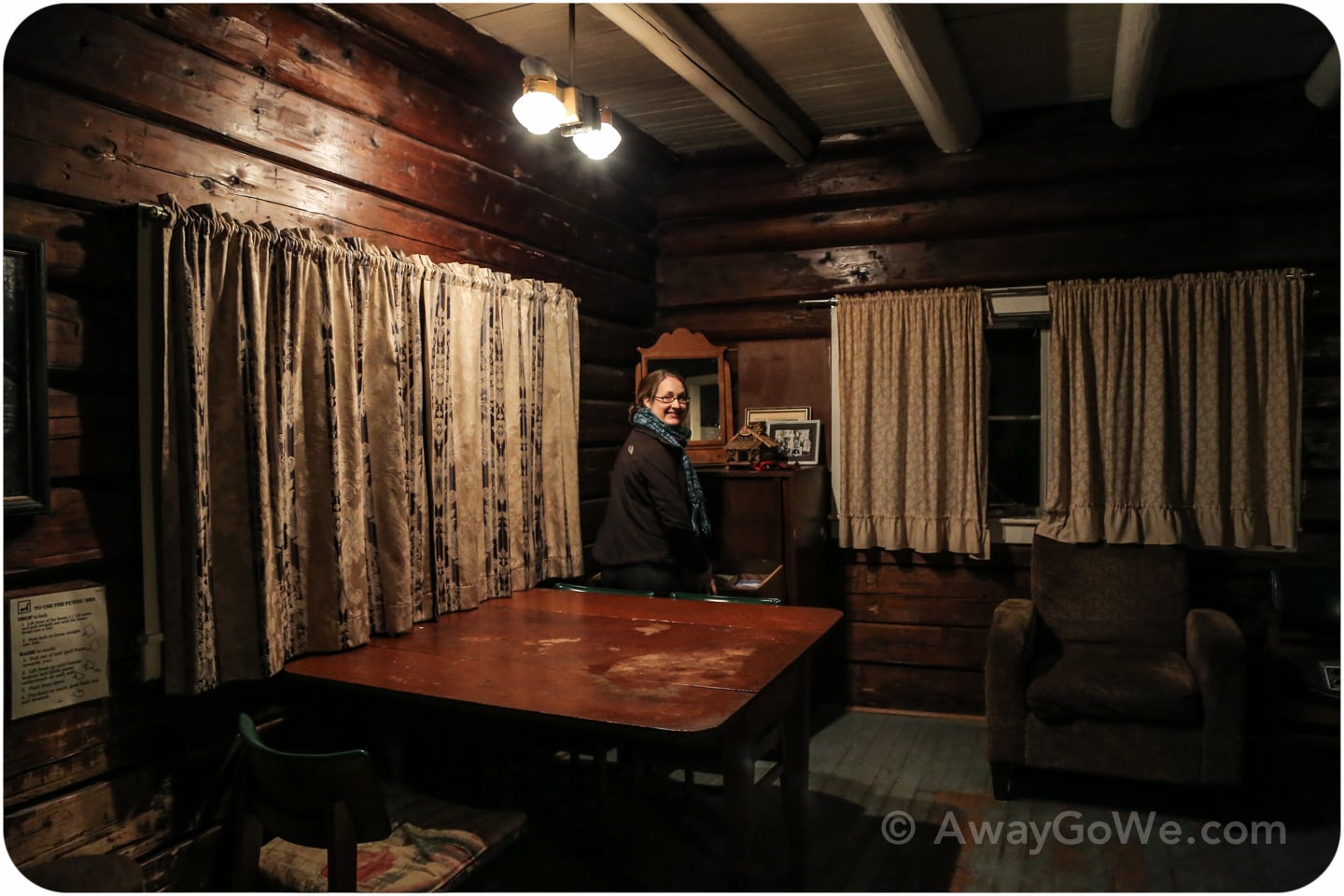
A Tour of Interrorem Cabin
Our peaceful abode for the weekend has three rooms: a front room (pictured above), kitchen, and one bedroom.
This particular Olympic National Park cabin is currently outfitted to sleep four, with a futon in the front room and a set of bunks in the bedroom.
There are no doors between the rooms, but there is a curtain dividing the bedroom from the front room.
The pit toilet is located about 50 yards from the cabin, just outside of the little compound.
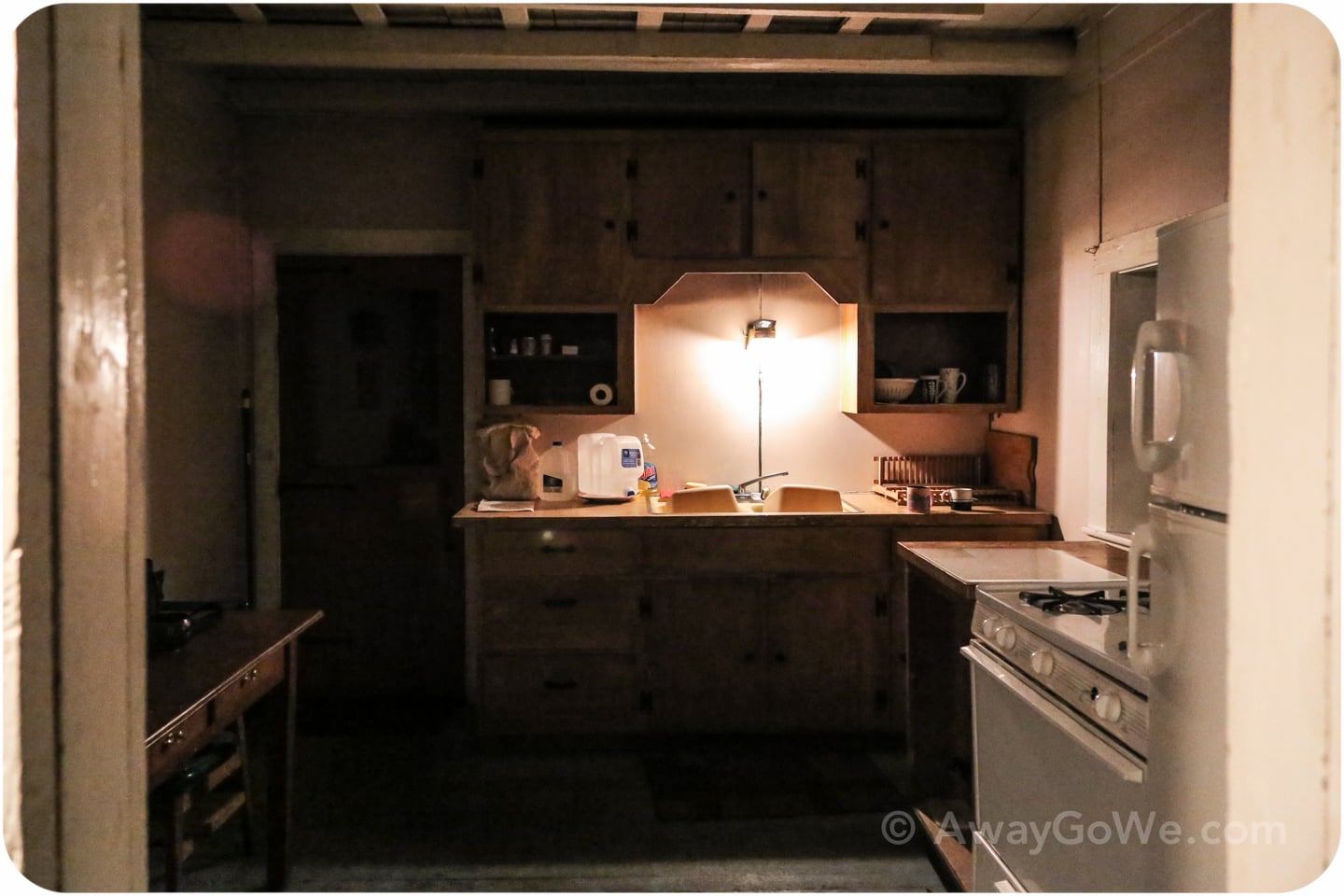
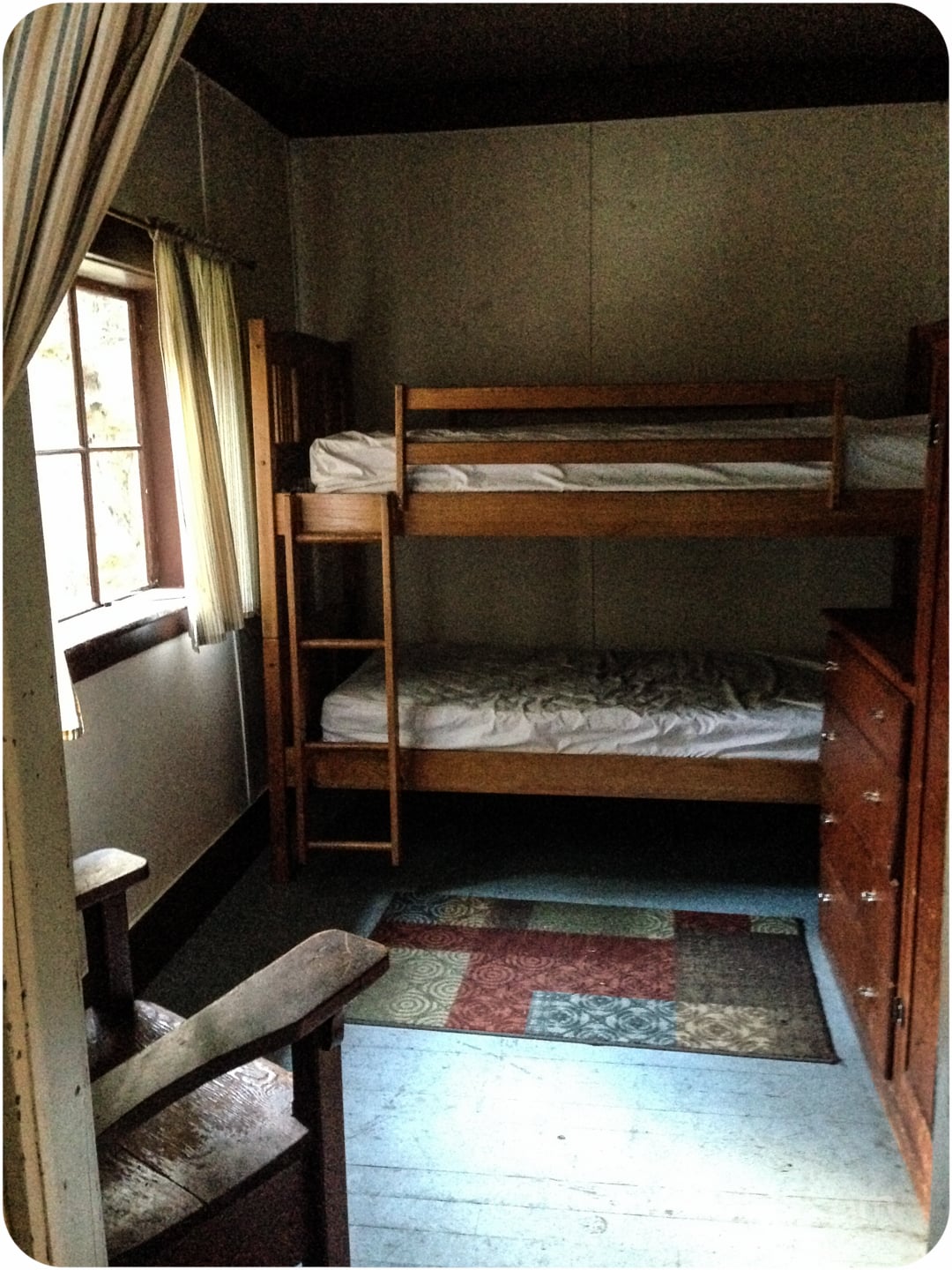
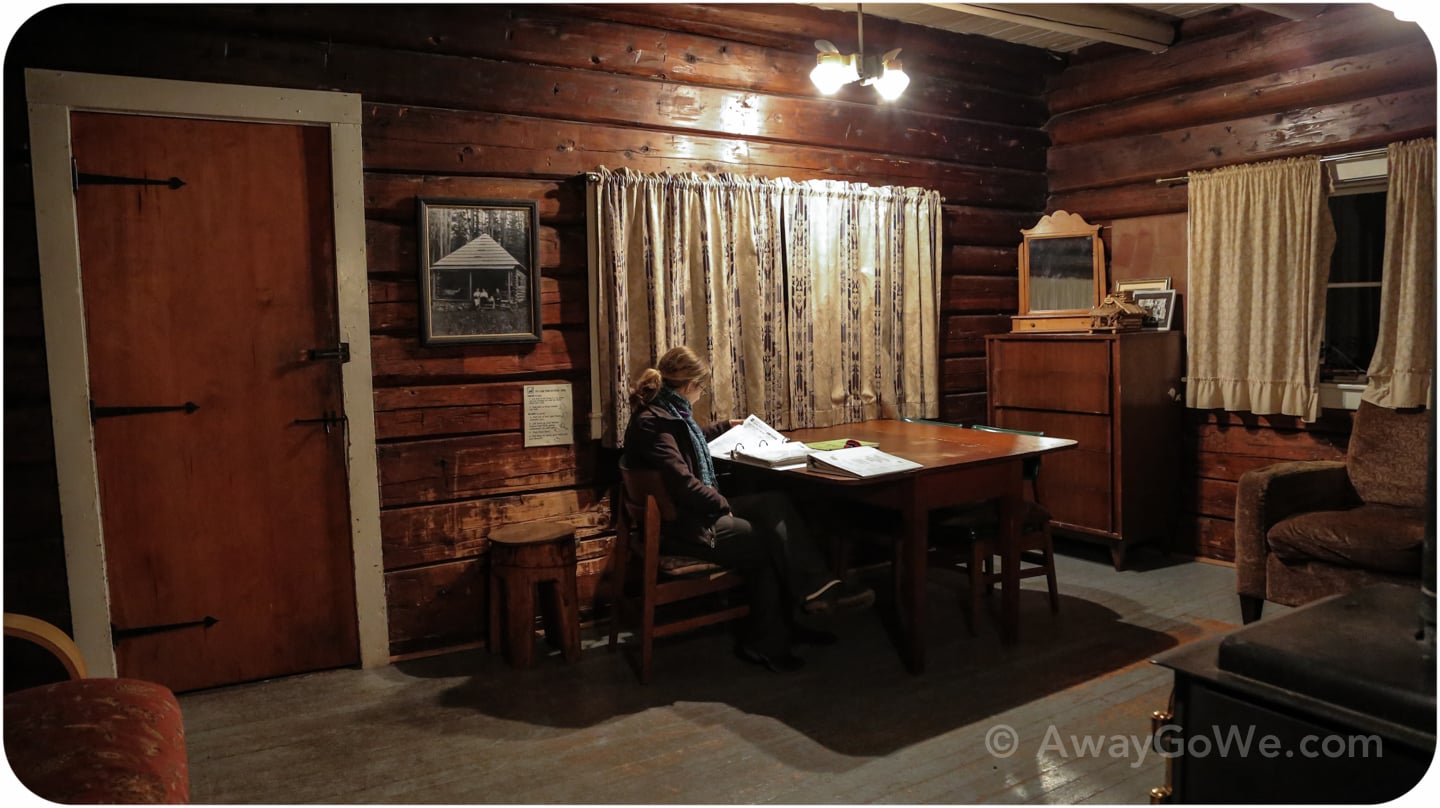
By now, you might be wondering how Interrorem Cabin got its name. We were too.
It’s kind of a mystery to everyone. Some folks seem to think that it’s a play on the word “interim.” Apparently, the cabin was originally built to be the interim ranger station for the National Park. As the interim period became longer and longer, so did the name…
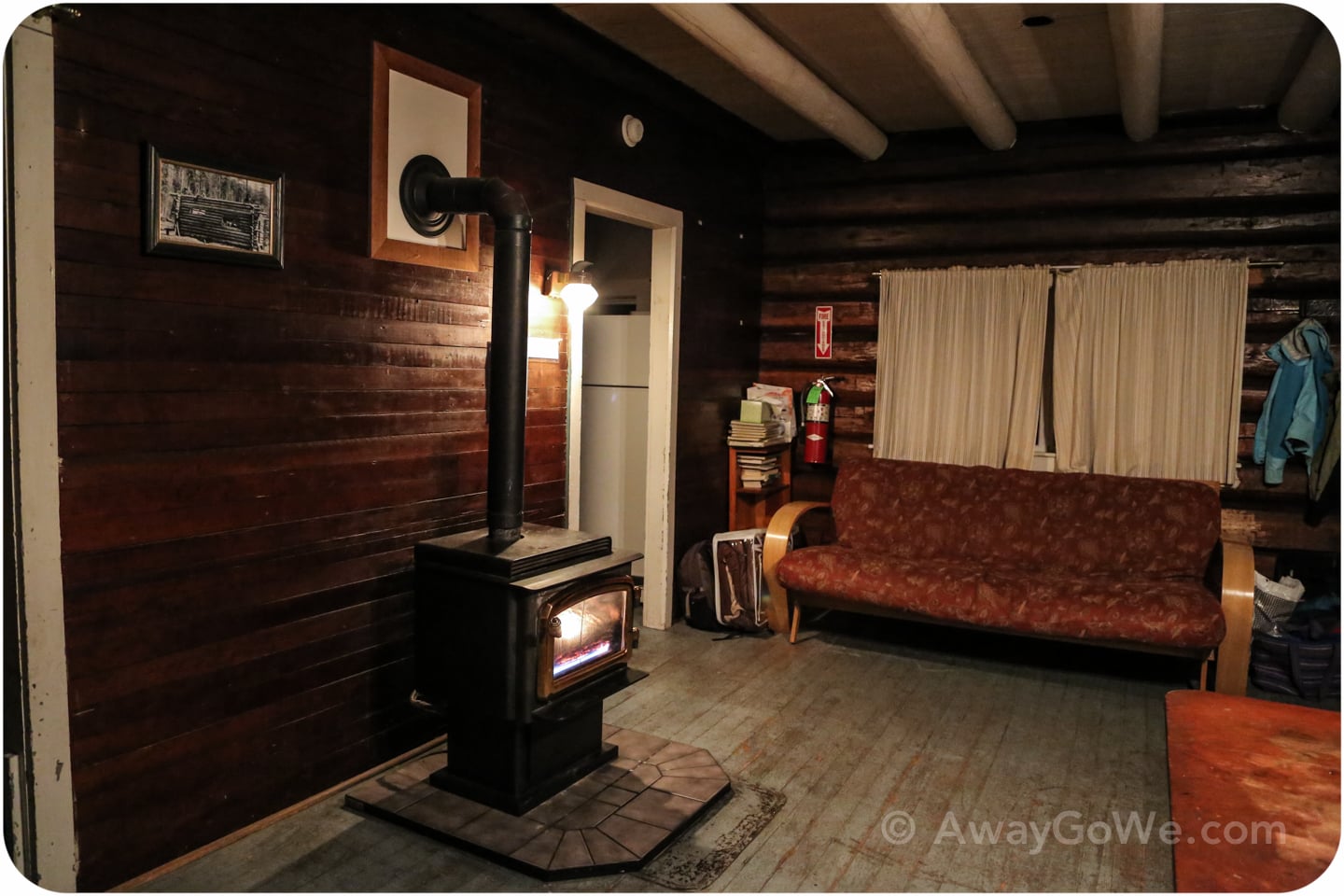
The climate on the Olympic Peninsula is mild year round, making Interrorem a good choice in any season.
We stayed in the month of January, and while temps did drop to the mid-thirties at night, sleeping in the front room near the propane heater-stove kept us nice and toasty.
Our first night was ridiculously clear. We were fortunate to catch a view of the stars just before moonrise, which are pretty incredible up here.
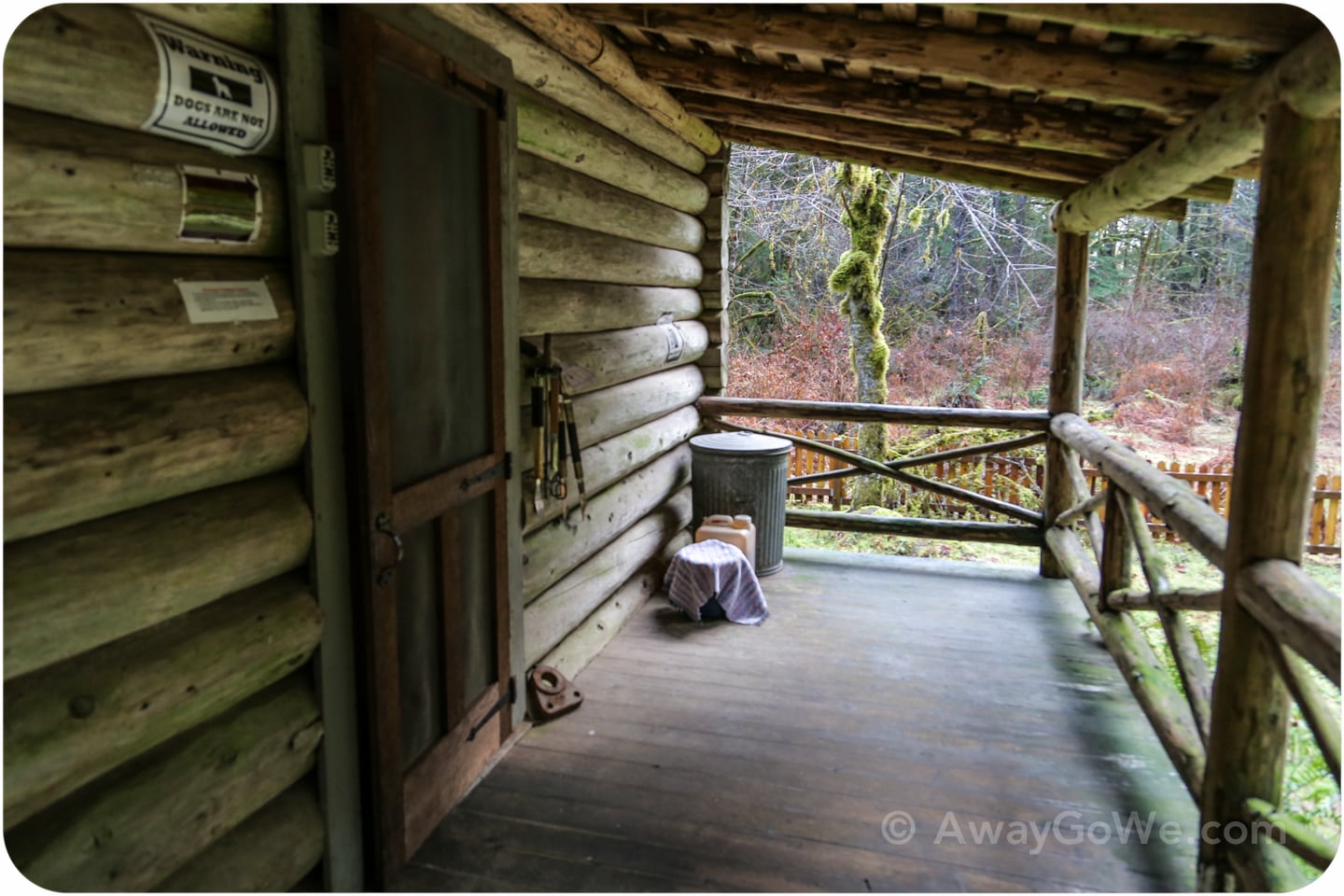
We awoke the next morning to the peace and solitude of winter on the Olympic Peninsula as we carried out morning chores.
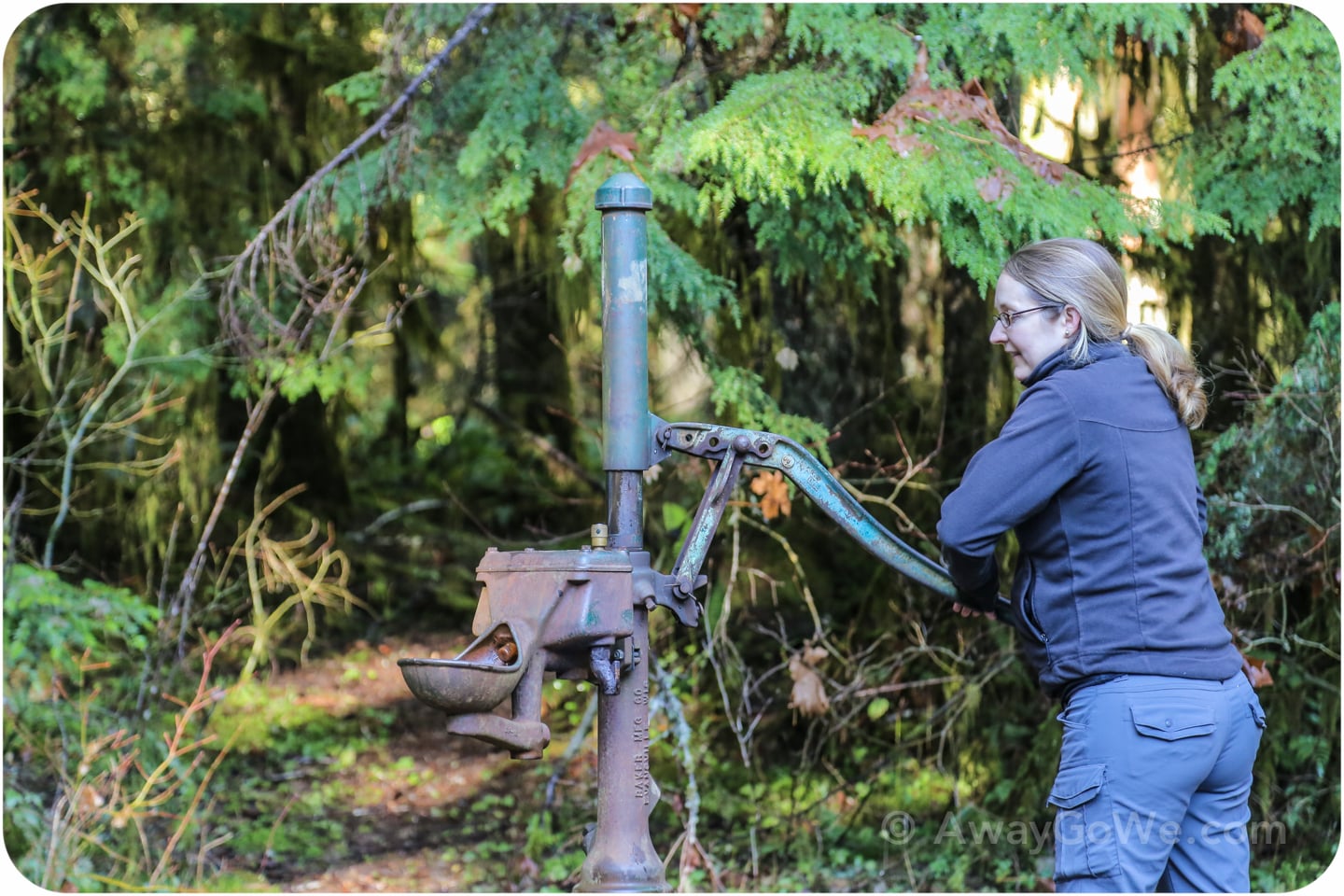
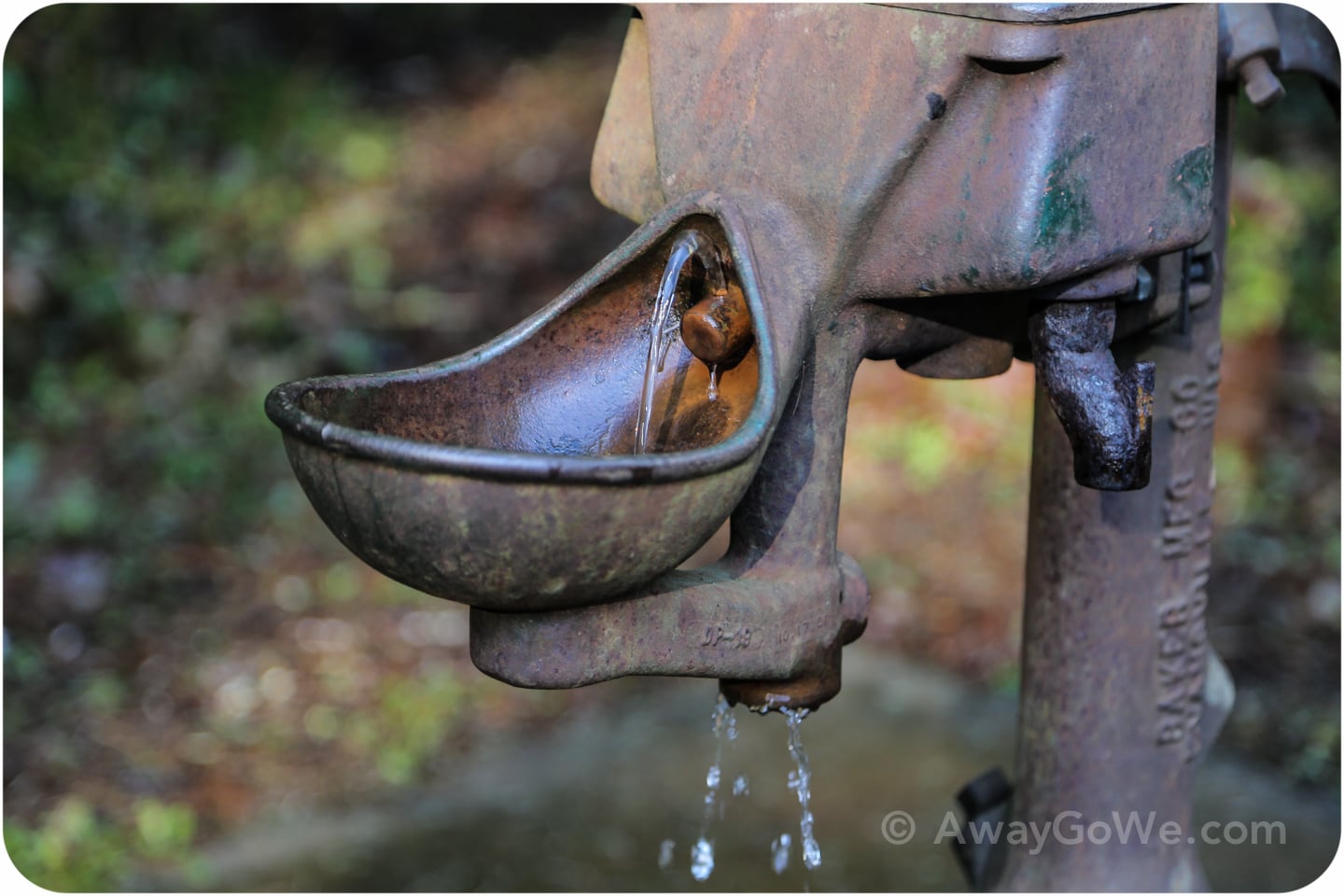
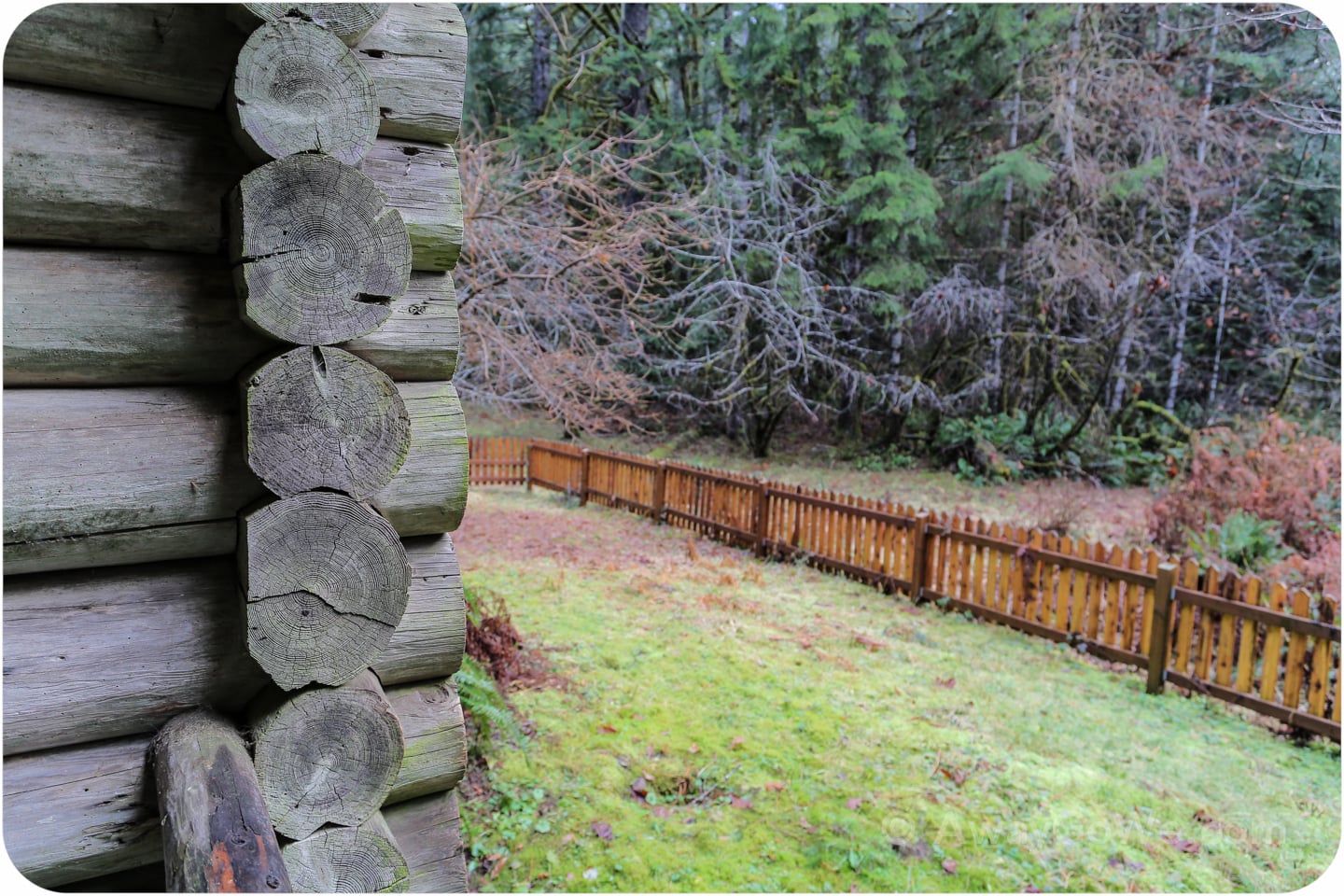
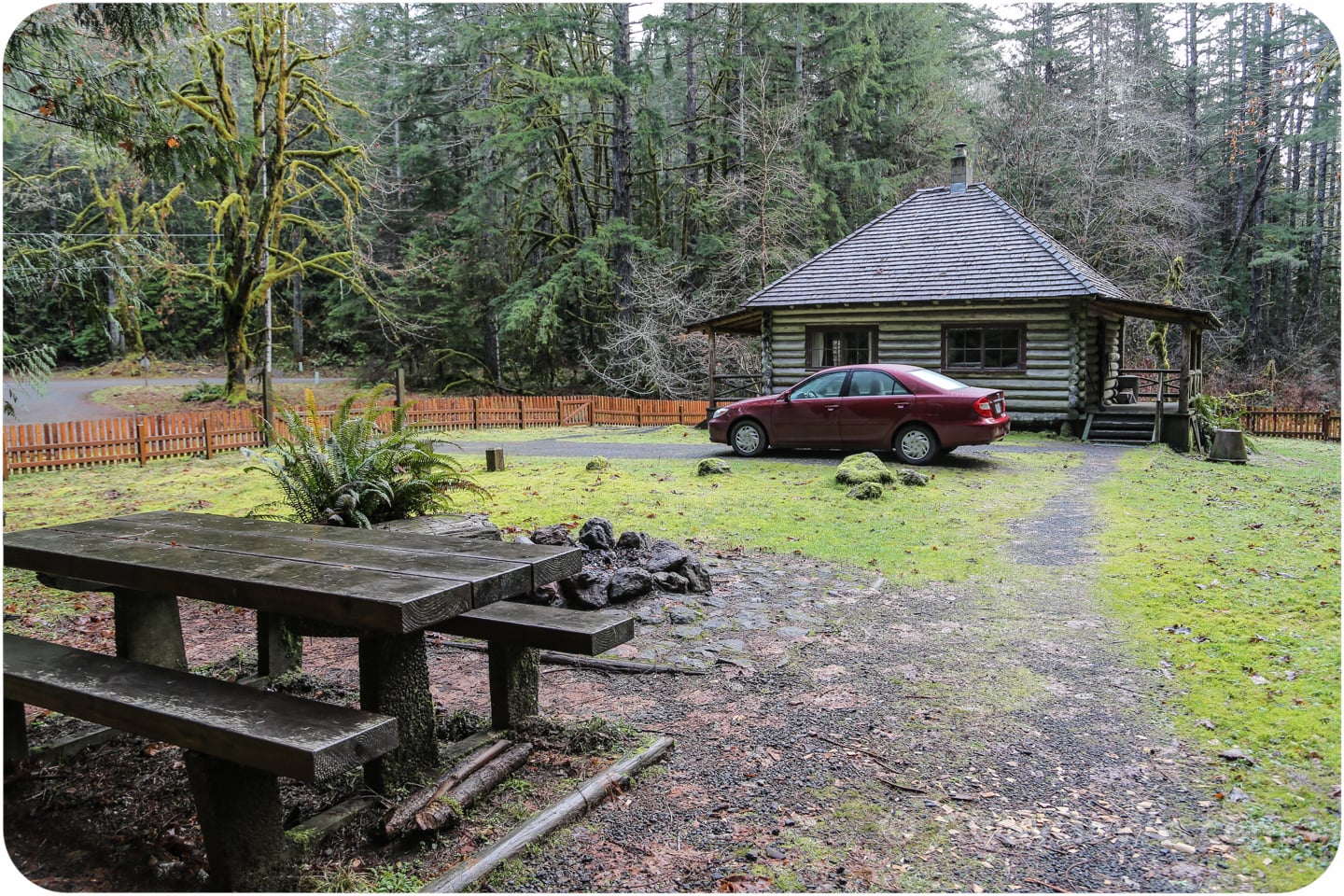
Yes, that is the car there next to the cabin—another luxury as far as these rustic cabins go.
In the past, Lori and I have had to pack all our stuff in a mile or two. There are in fact a lot of cabins and shelters like this in the PacNW that you have to hike several miles, or even snowshoe or ski into.
There are a couple of fire lookouts I’ve been wanting to stay in for years that require 6-10 miles of hoofing to get to, but many also require a 4×4 vehicle just to access the trail. Some day.
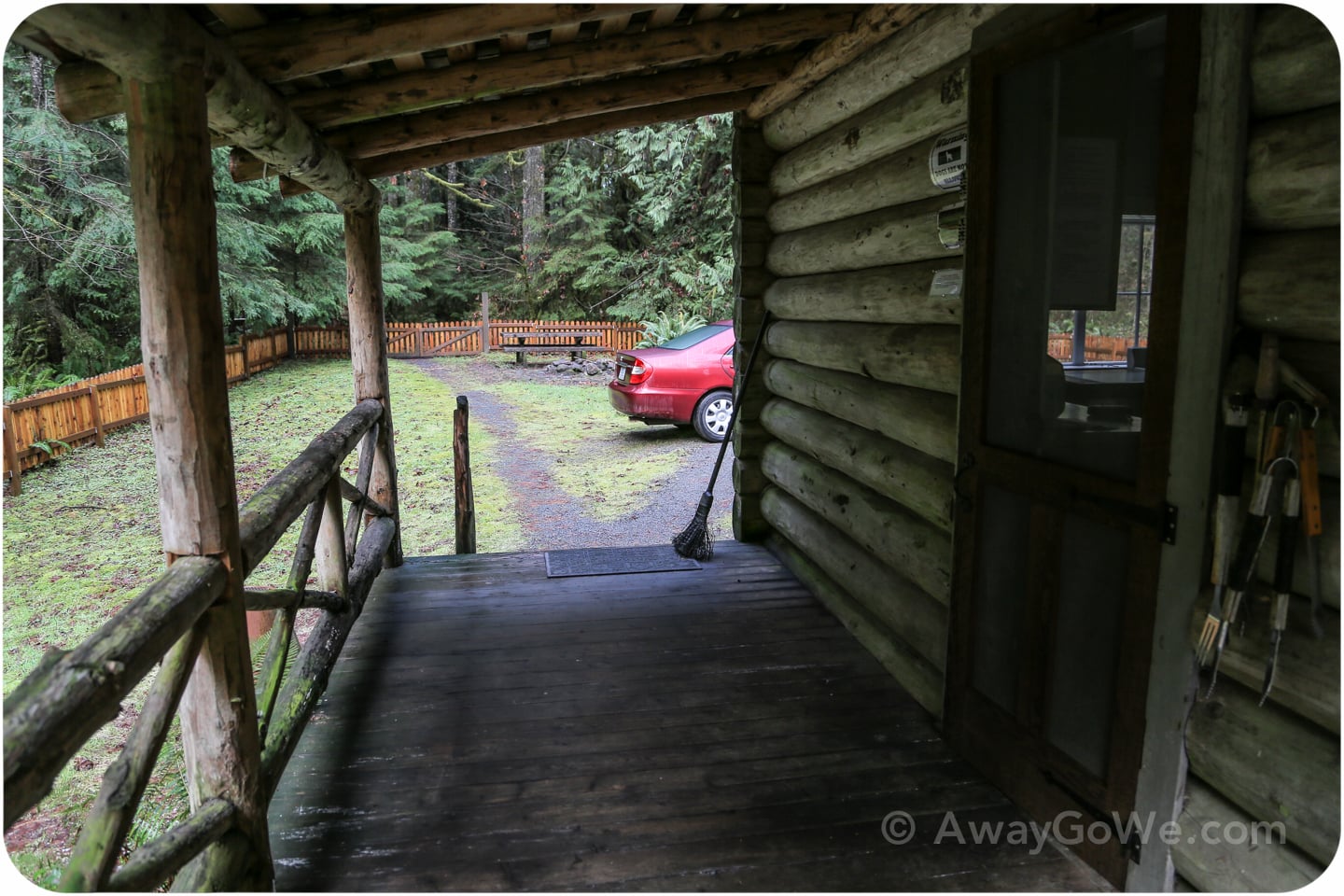
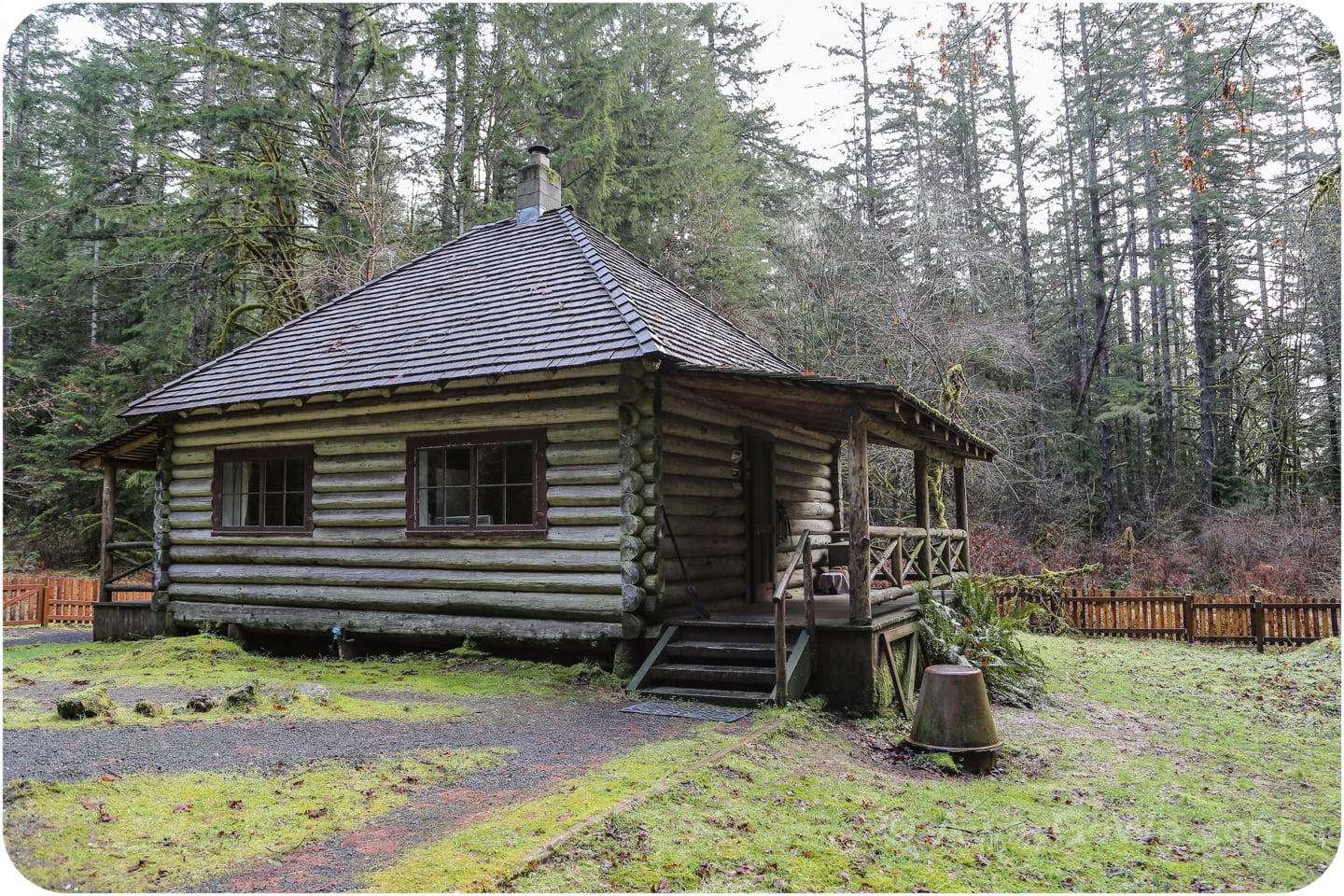
We had the cabin for two nights. The first night, was just Lori and me. Lori’s brother, Dan, and his sig-o, Lauren, joined us the next morning from Tacoma.
That’s when things got real crazy. Yep, hiking, Settlers of Catan, and the Whole30. Let’s just say that last one took the weekend’s minimalism to a whole other level.
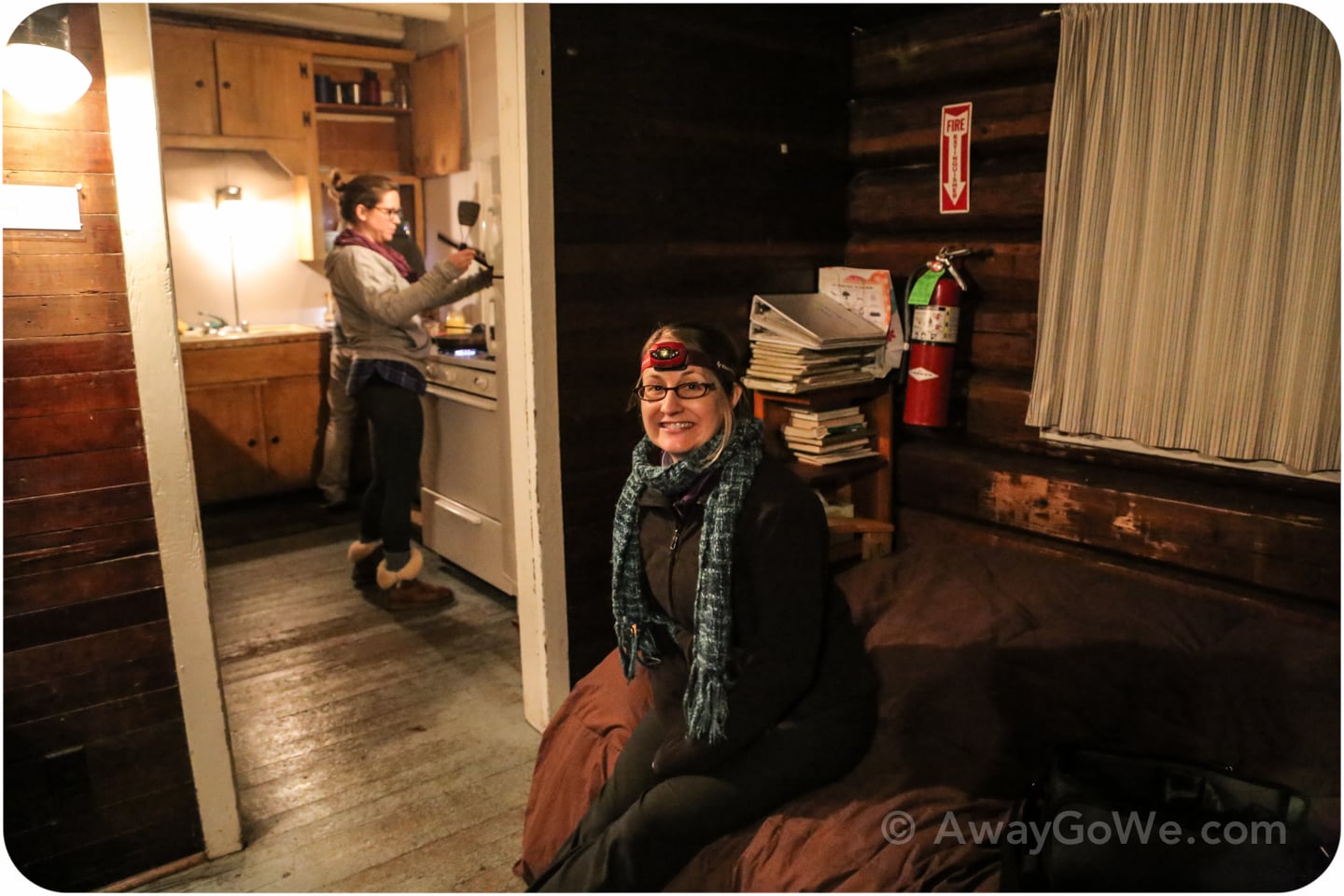
And yes, that is some crazy Whole30 action going on back in the kitchen. Ghee whiz.
A headlamp was a necessity for a nighttime visit to the latrine in the far-flung reaches of the property.
It’s always fun afterwards to see how long it will take for Lori to realize she’s still wearing her headlamp. The current record stretches into hours. Or at least that’s how long it feels when I’m talking to her and trying desperately not to laugh.
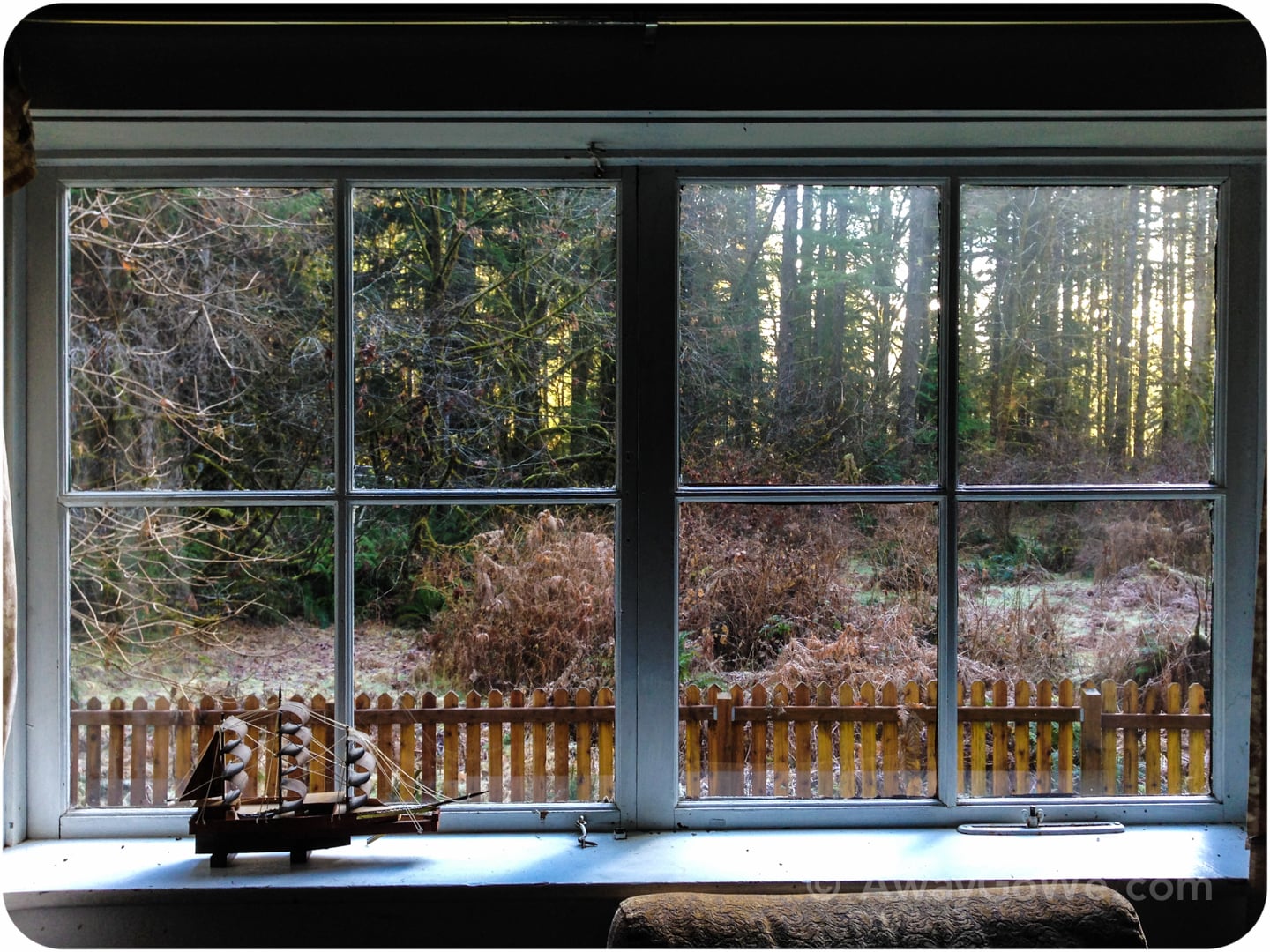
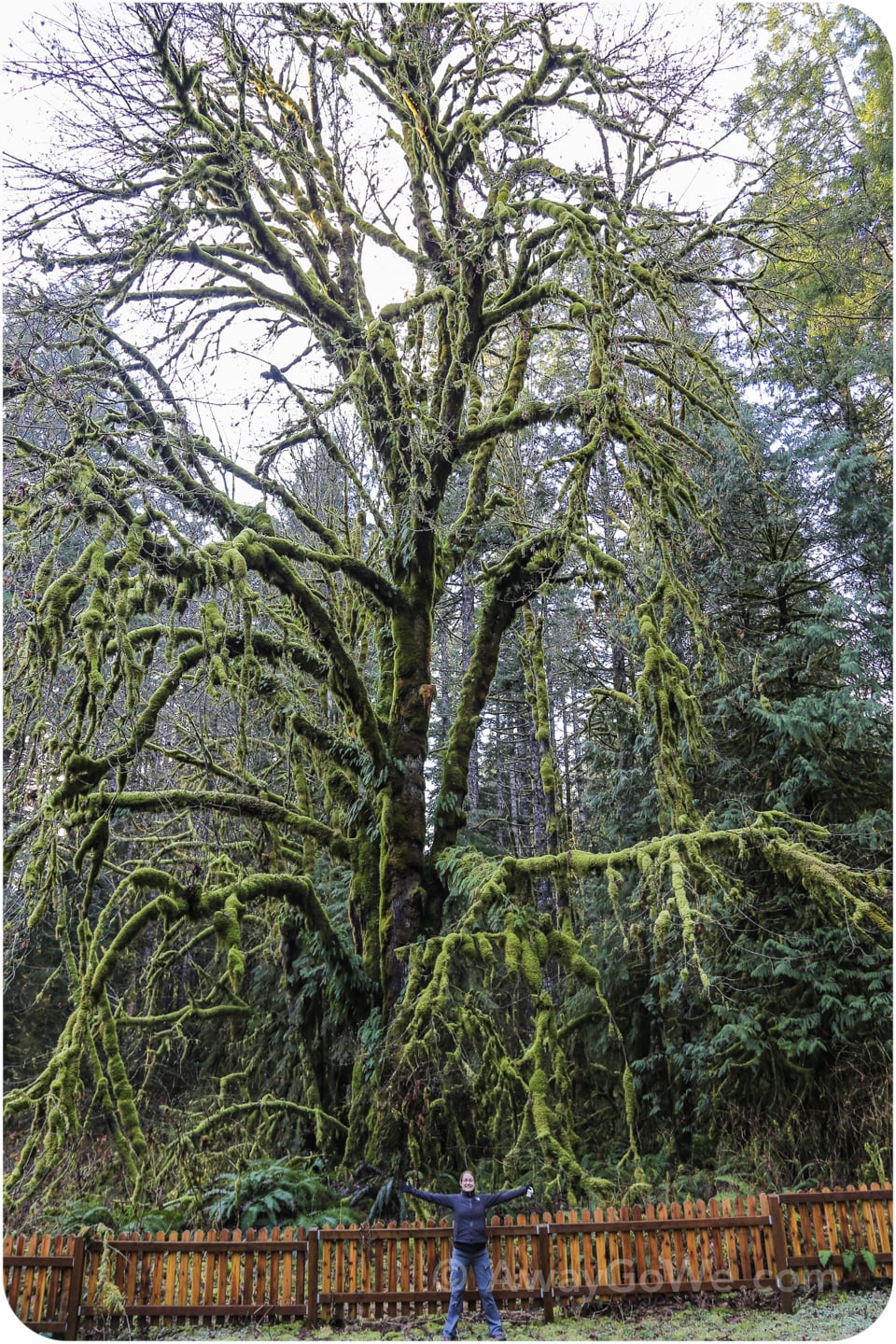
That’s quite the tree in the backyard! Can you spot Lori?
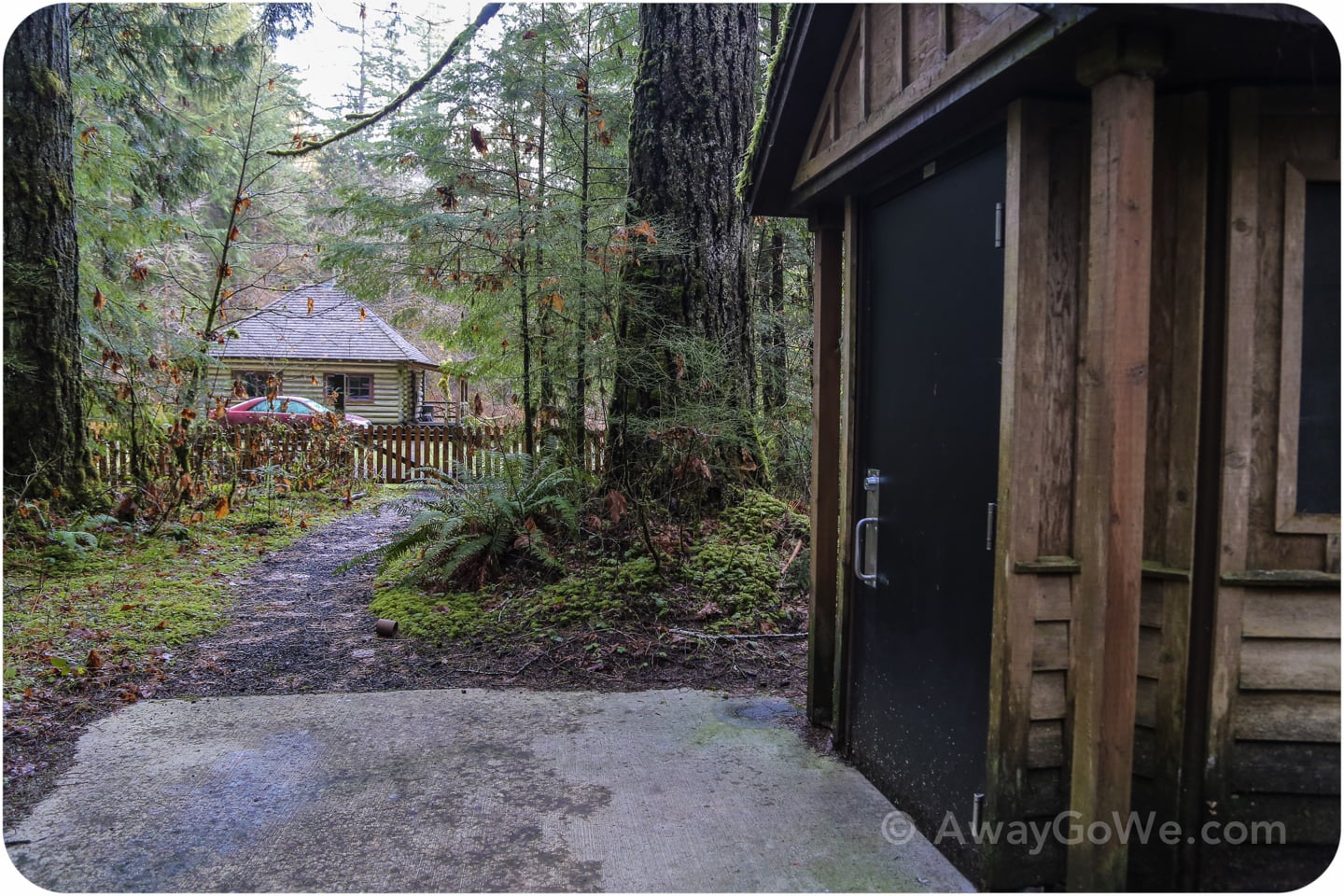
The cabin, as seen from its lonely vault toilet. Might not seem like a long way, but it might as well be on the moon when you’re finding yourself doing the ol’ morning shuffle to the latrine.
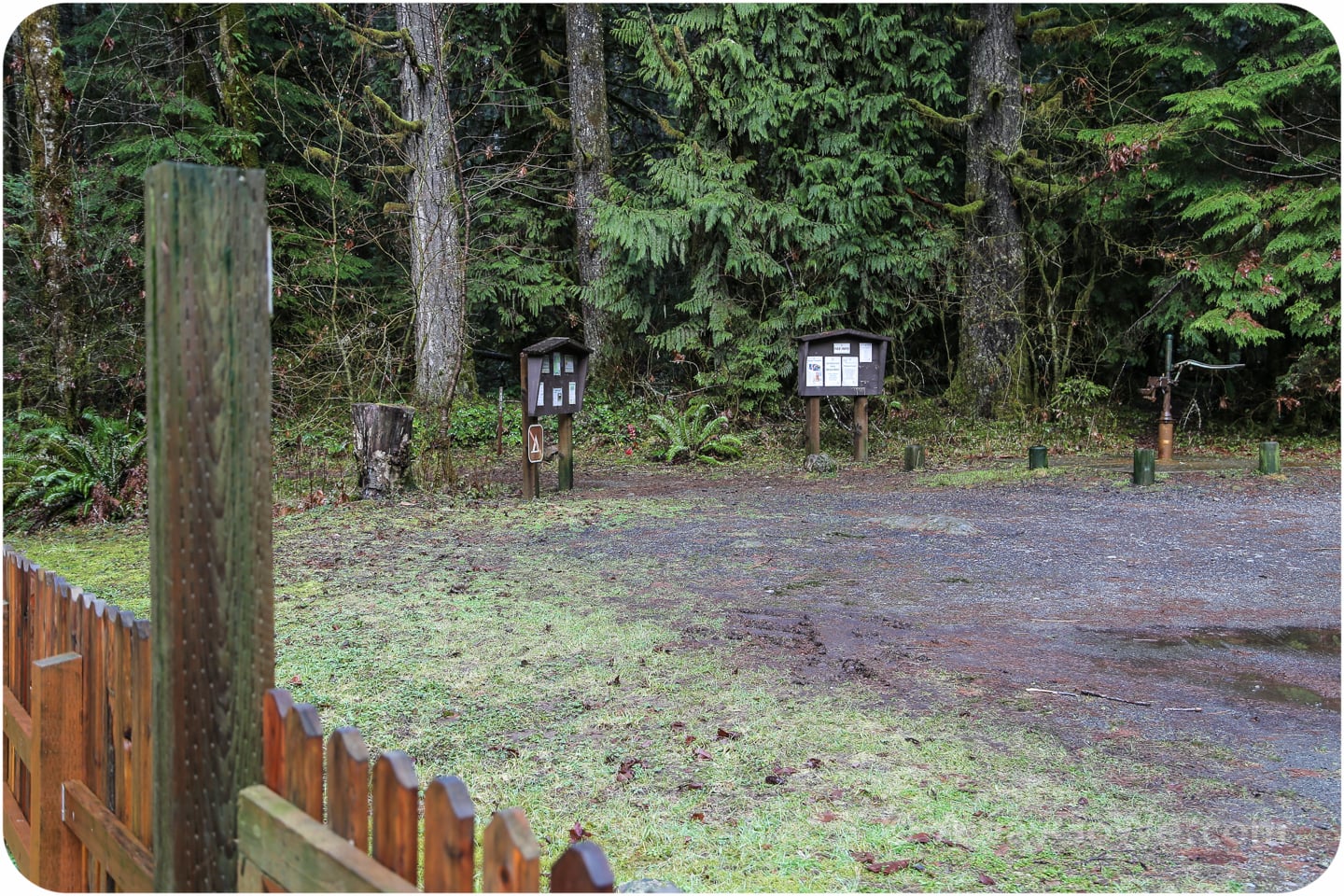
How to Reserve Interrorem Cabin
Booking a stay at Interrorem Cabin is easily done online through the U.S. government’s reservation portal. There, you can get current information and road conditions, and check availability.
The hardest part about booking the cabin is securing a weekend stay, as slots fill up fast, even during the winter months.
If you’re not able to book during the week, you’ll generally need to reserve far in advance.
Nearby Hiking in Olympic National Forest
Interrorem is also a great jumping-off place for hiking. In addition to a multitude of area trails, there are two worthwhile hikes originating at the trailhead just outside of the cabin compound, and several others farther up the gravel road.
Interrorem Nature Trail & Interpretive Loop
Beyond the cabin’s vault toilet are two short and very worthwhile hiking excursions: the Nature Trail/ Interpretive Loop (0.3 mi) and the Ranger Hole trail (1.6 mi).
The brief, yet informative, Interpretive Loop tells the story of Interrorem and Olympic National Park’s first rangers, in addition to providing information on the fauna and flora of the area.
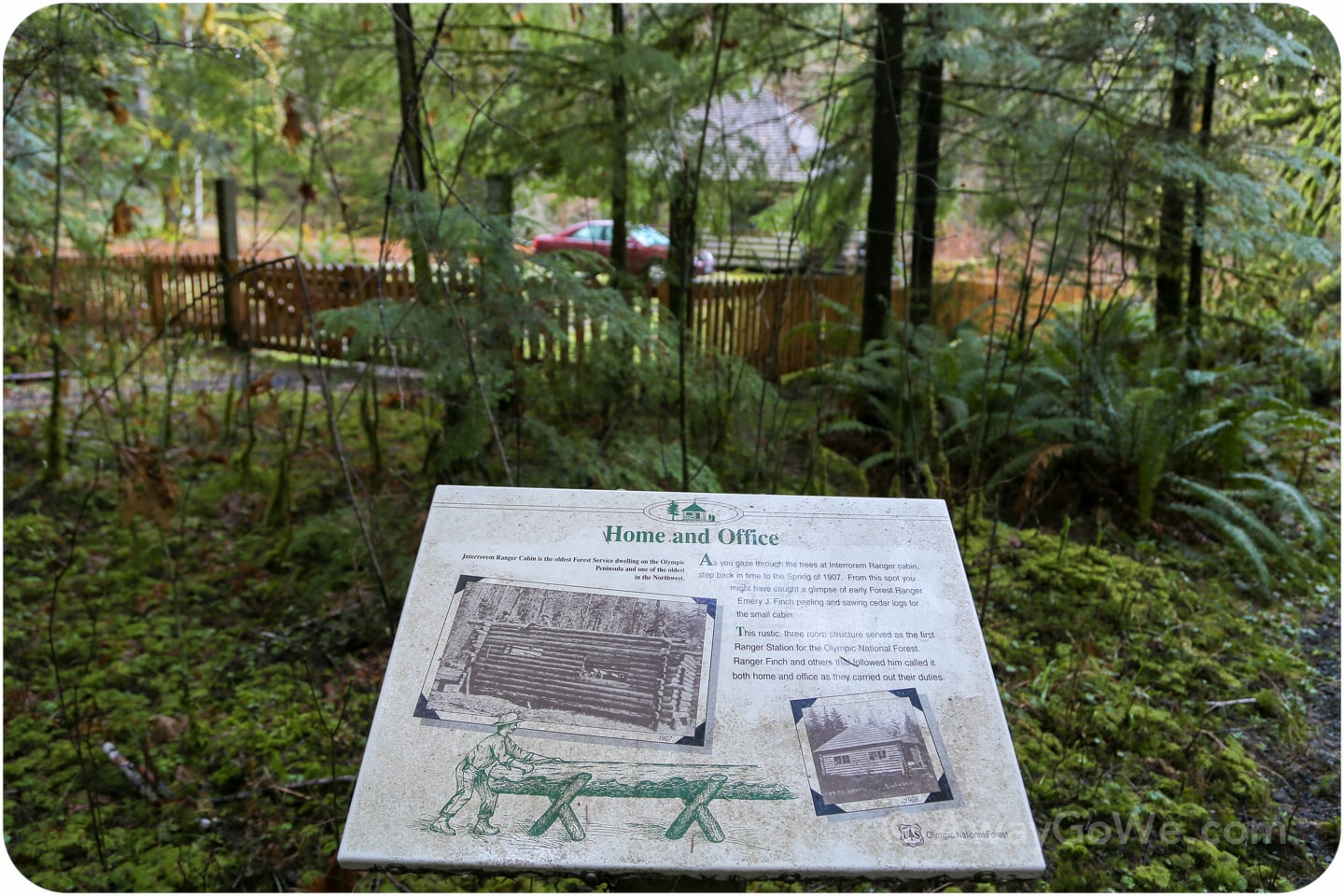
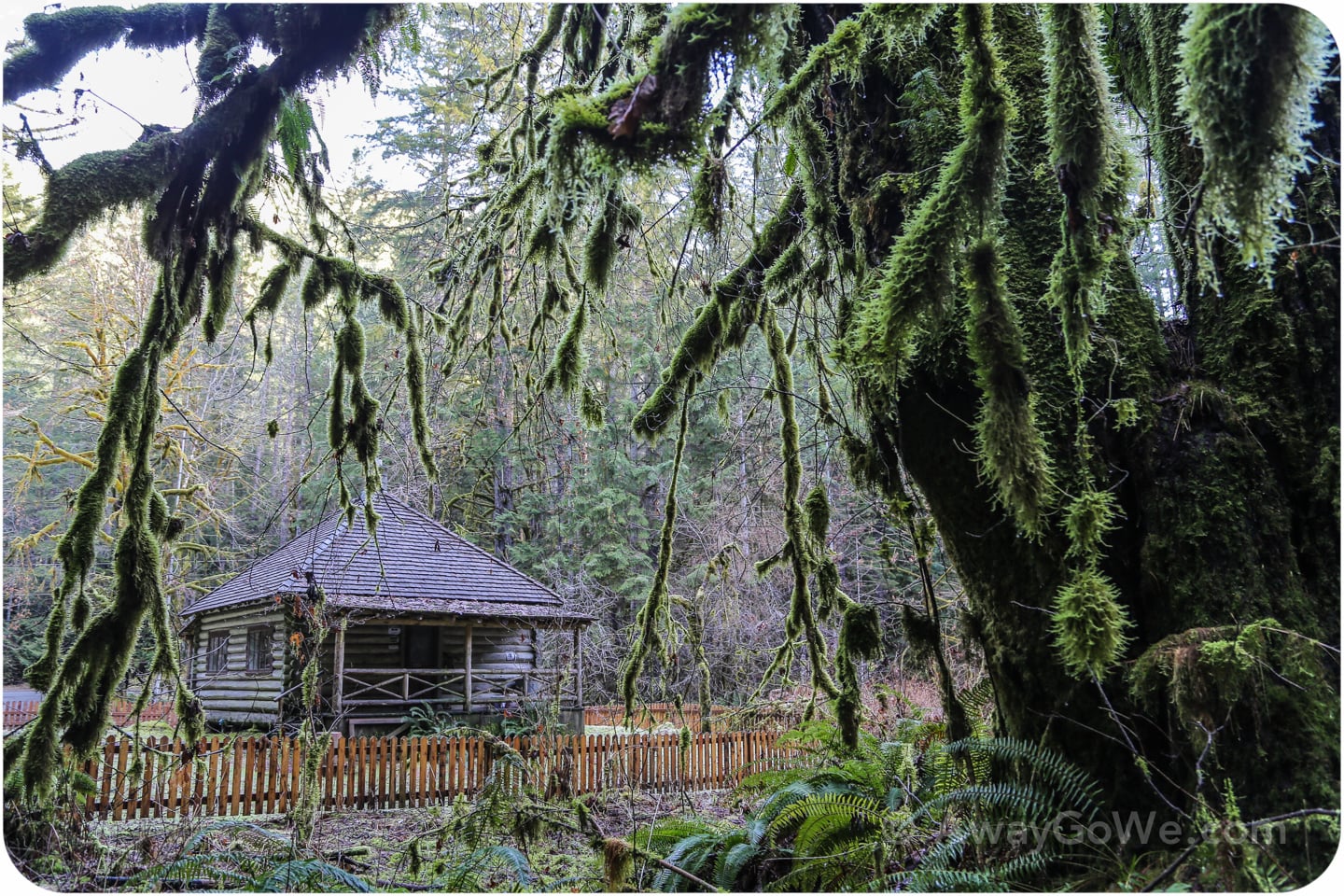
The Ranger Hole trail, on the other hand, traces the actual path that early rangers followed most days to the river to fetch water and fish—0.8 miles each way, and uphill on the way back (watering holes are often cruel that way, it seems).
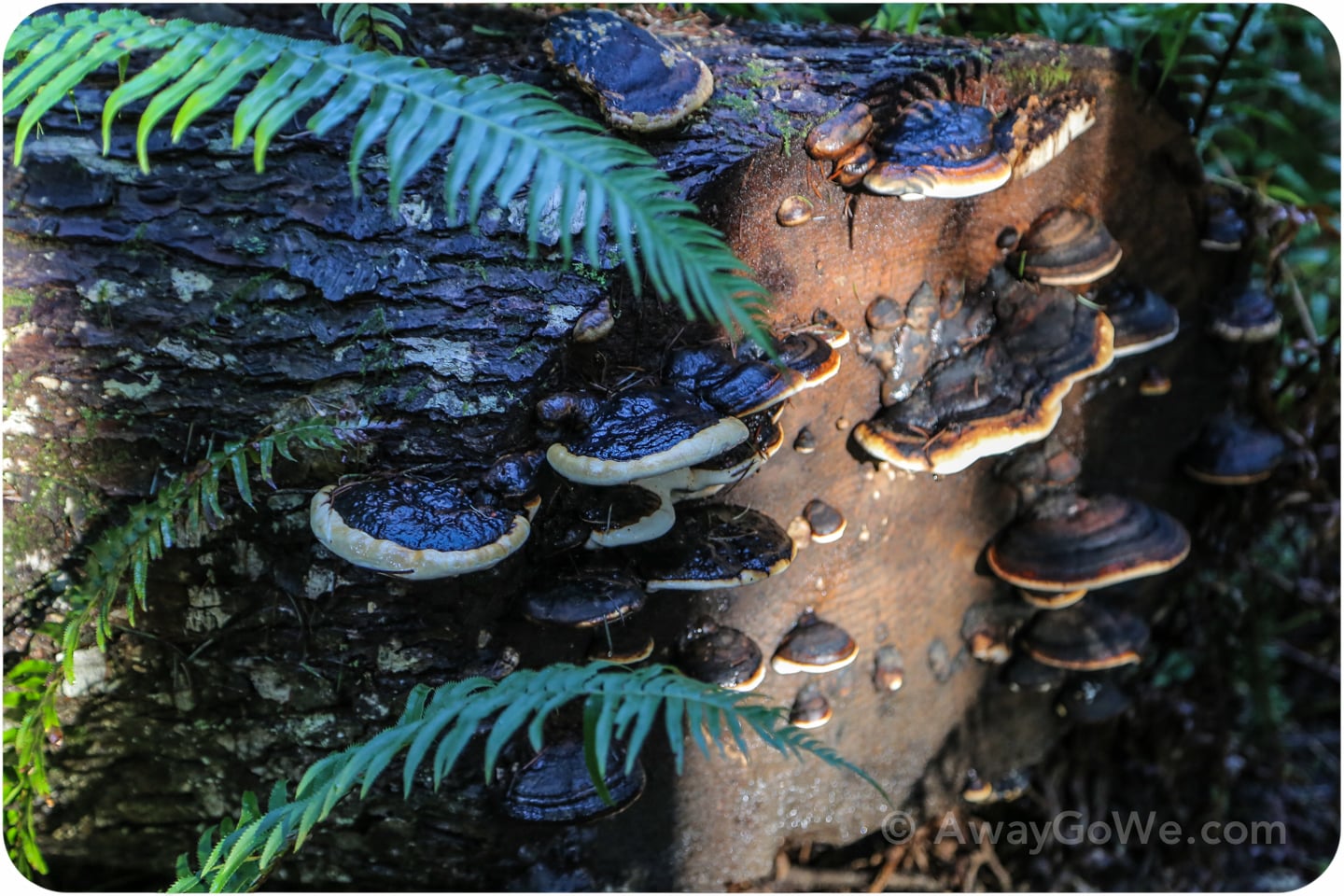
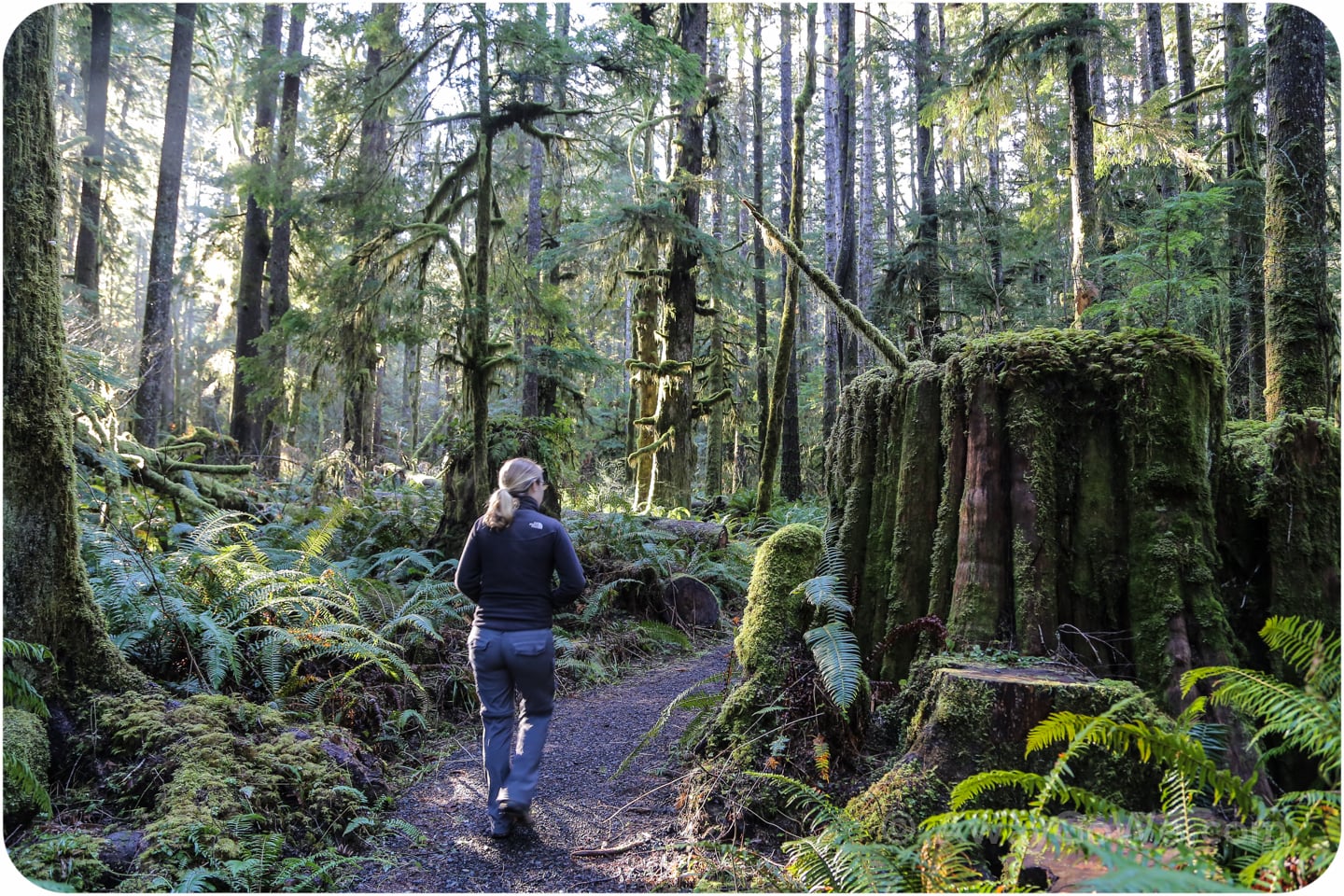
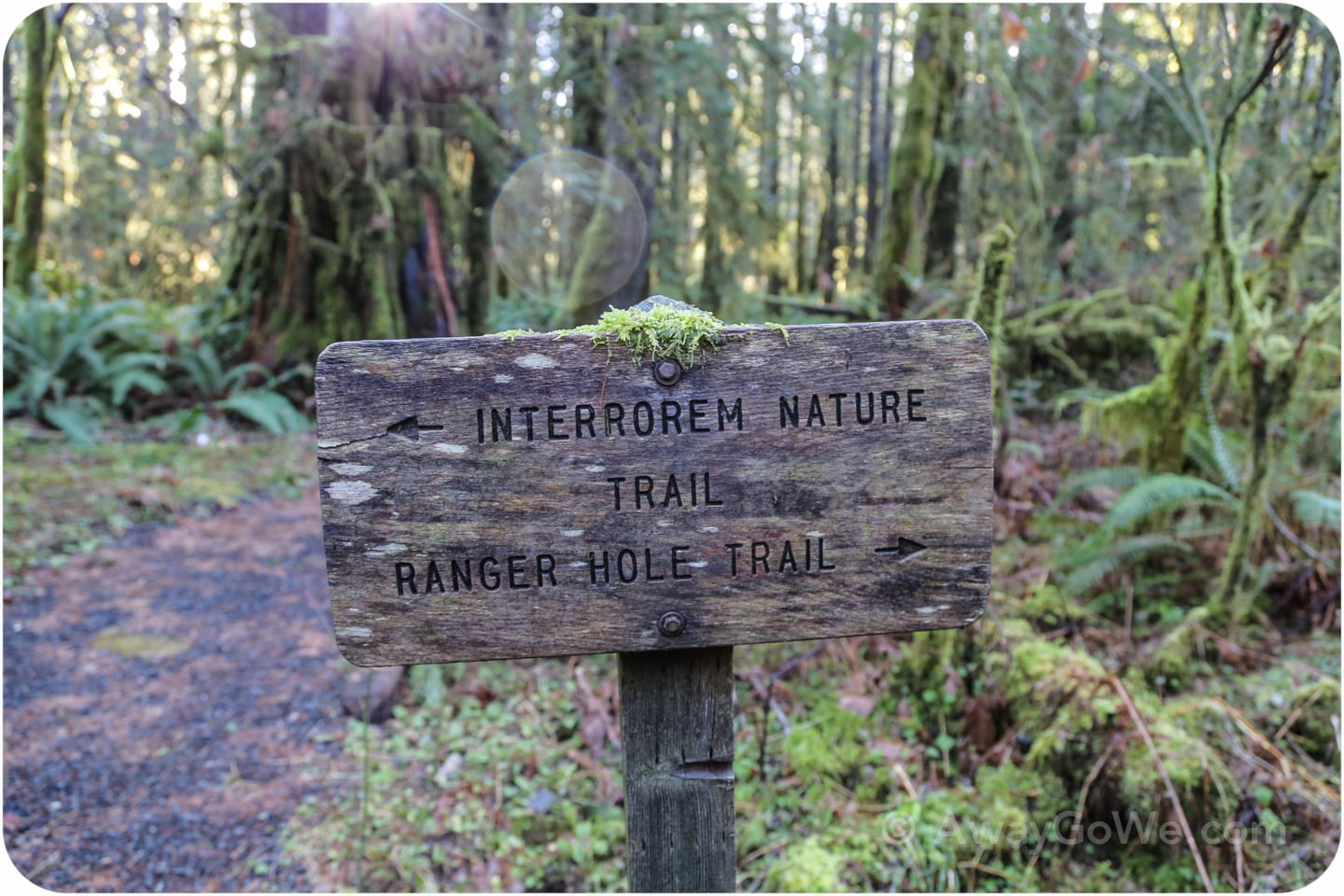
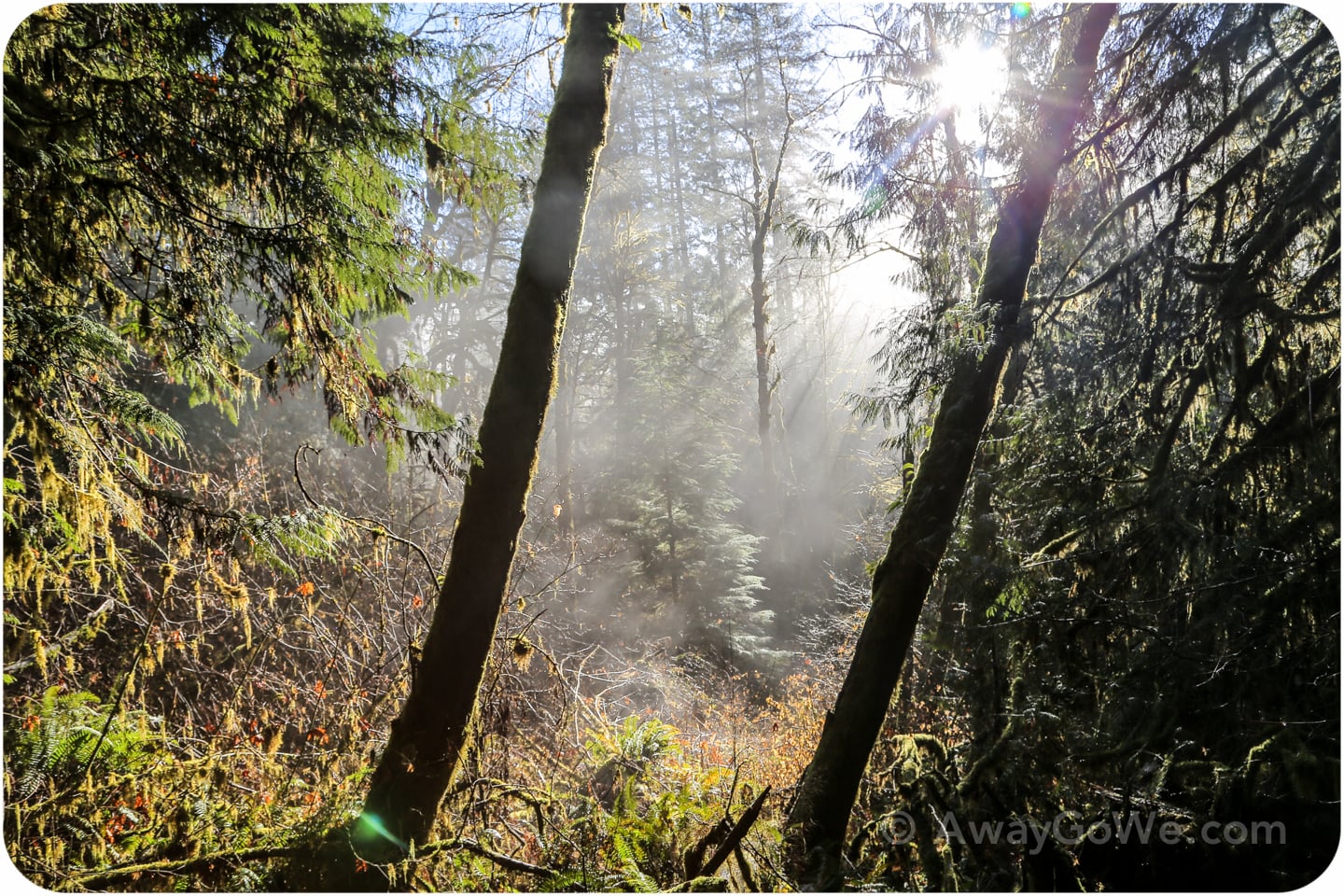
Arriving at the hole, the morning sun bathed the banks of the Duckabush River in brilliant sunlight, but the immense trees lining the river left the Duckabush in shadow.
Yet, the striking blue-ice color of the glacial runoff raging below still shone brightly, and Lori and I were both glad to be up on the banks rather than down below attempting to fill our water pails.
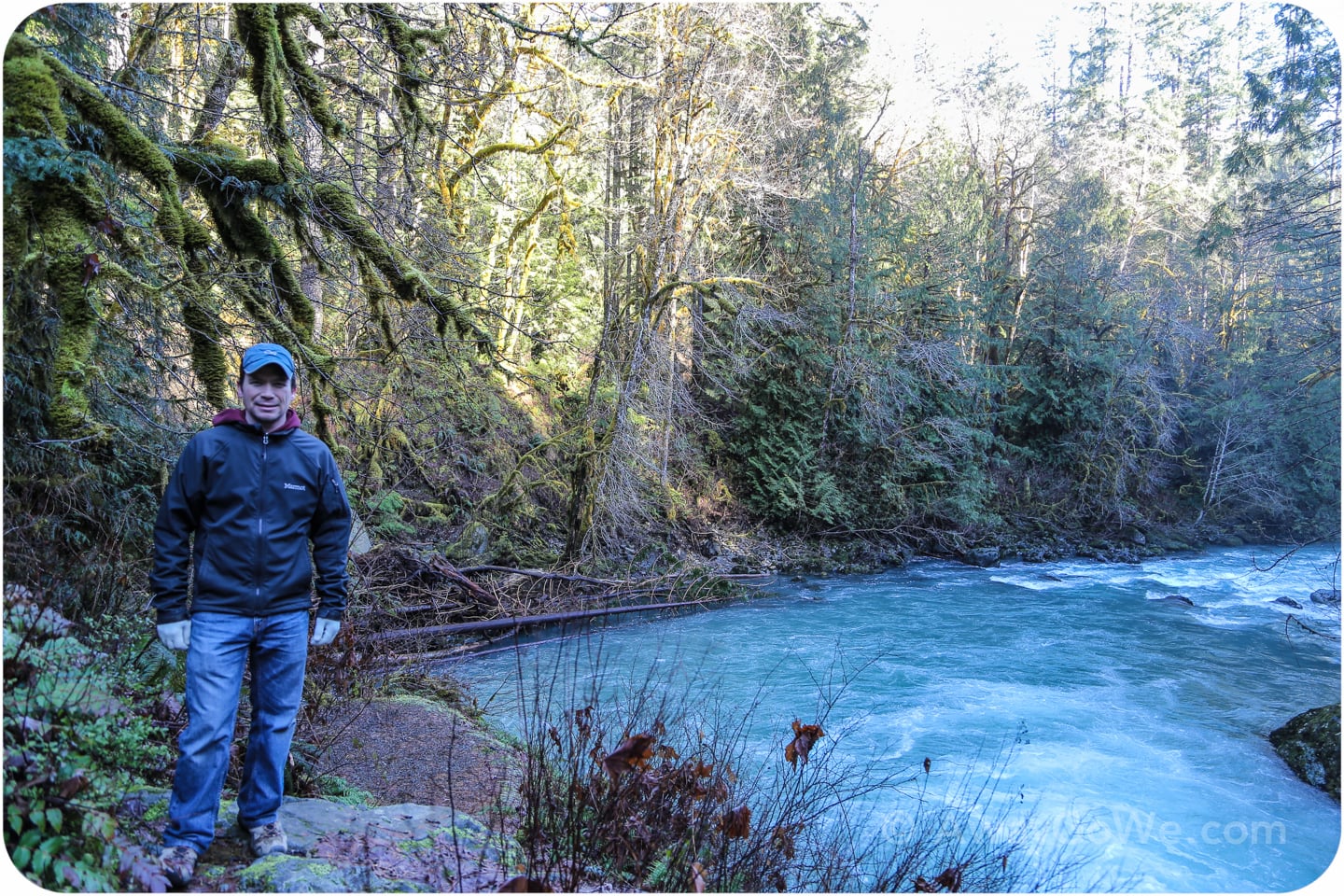
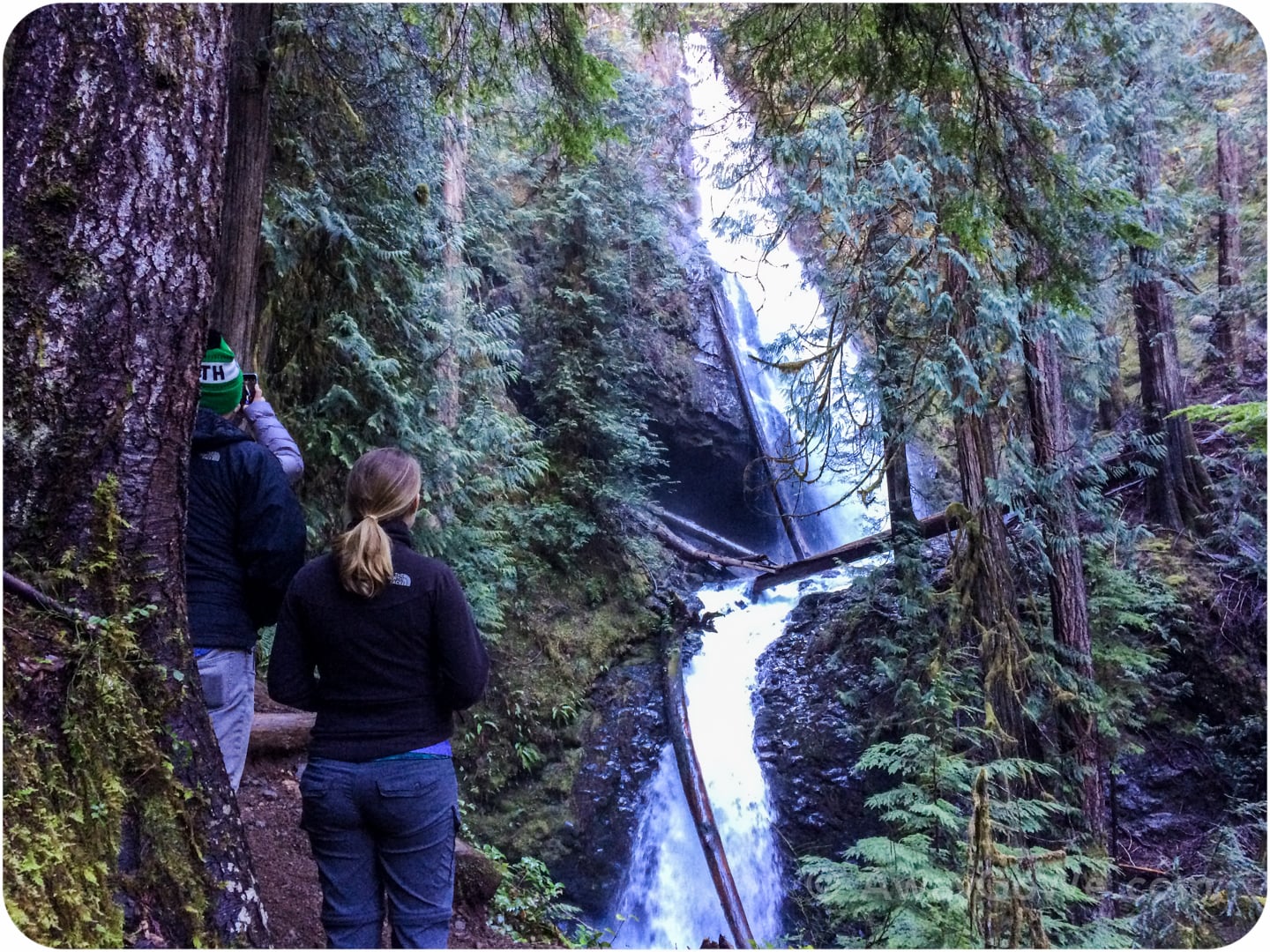
Murhut Falls Trail
There are a number of hikes heading up the gravel road from the cabin. Murhut Falls trails promised a big payoff (waterfalls) with not too much effort, so we gave it a whirl.
Coming in just under two miles total, and 300 feet net elevation gain, this trail wasn’t threatening to break any of our records. Yet, a stroll around the Olympic rainforest, among old-growth trees and raging waterfalls, is always rewarding, no matter the length of the trail.
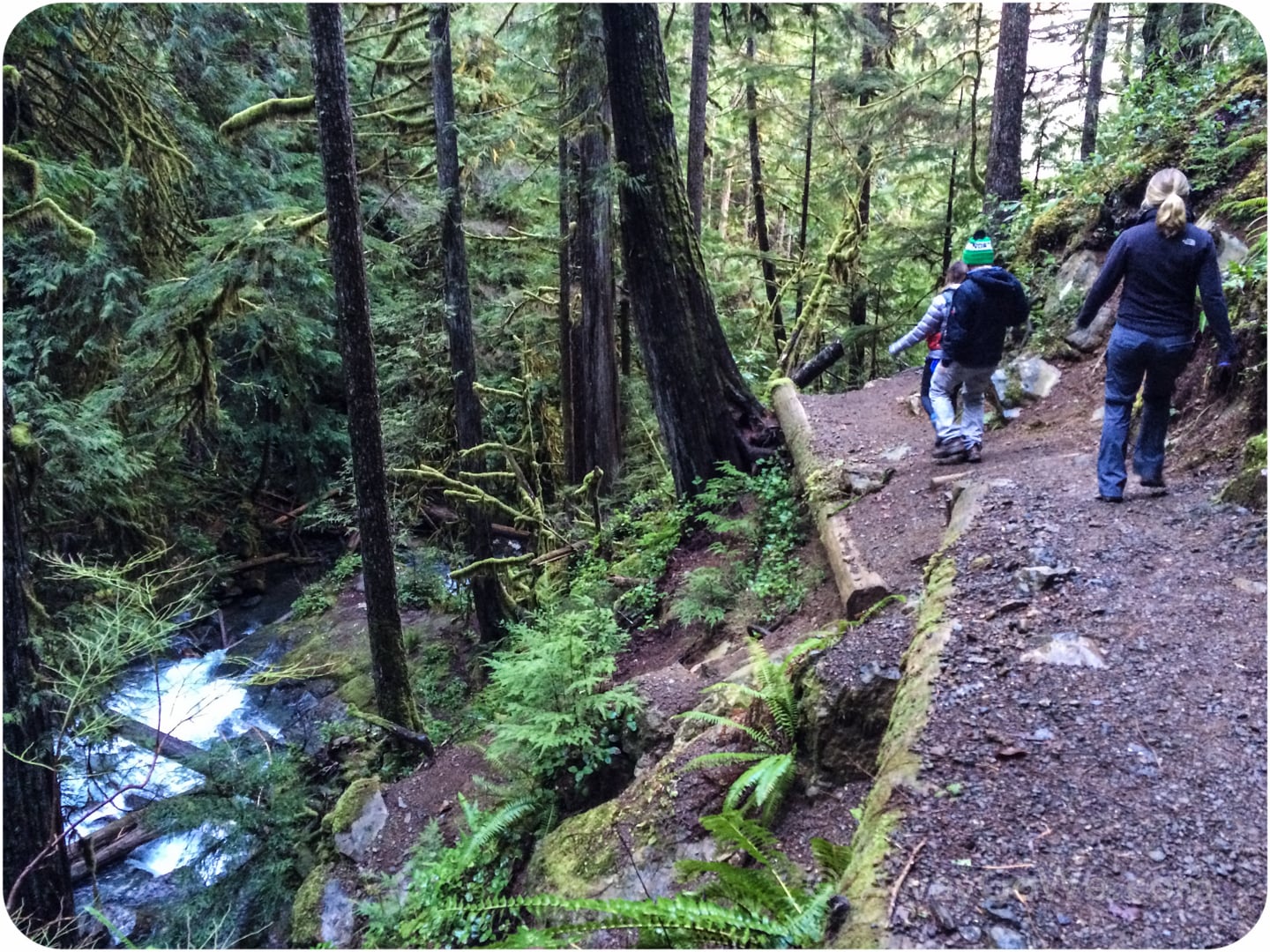
Plus, it was a rare opportunity to trek around in the mountains of the Pacific Northwest in the dead of winter and not have to deal with snow or freezing temps.
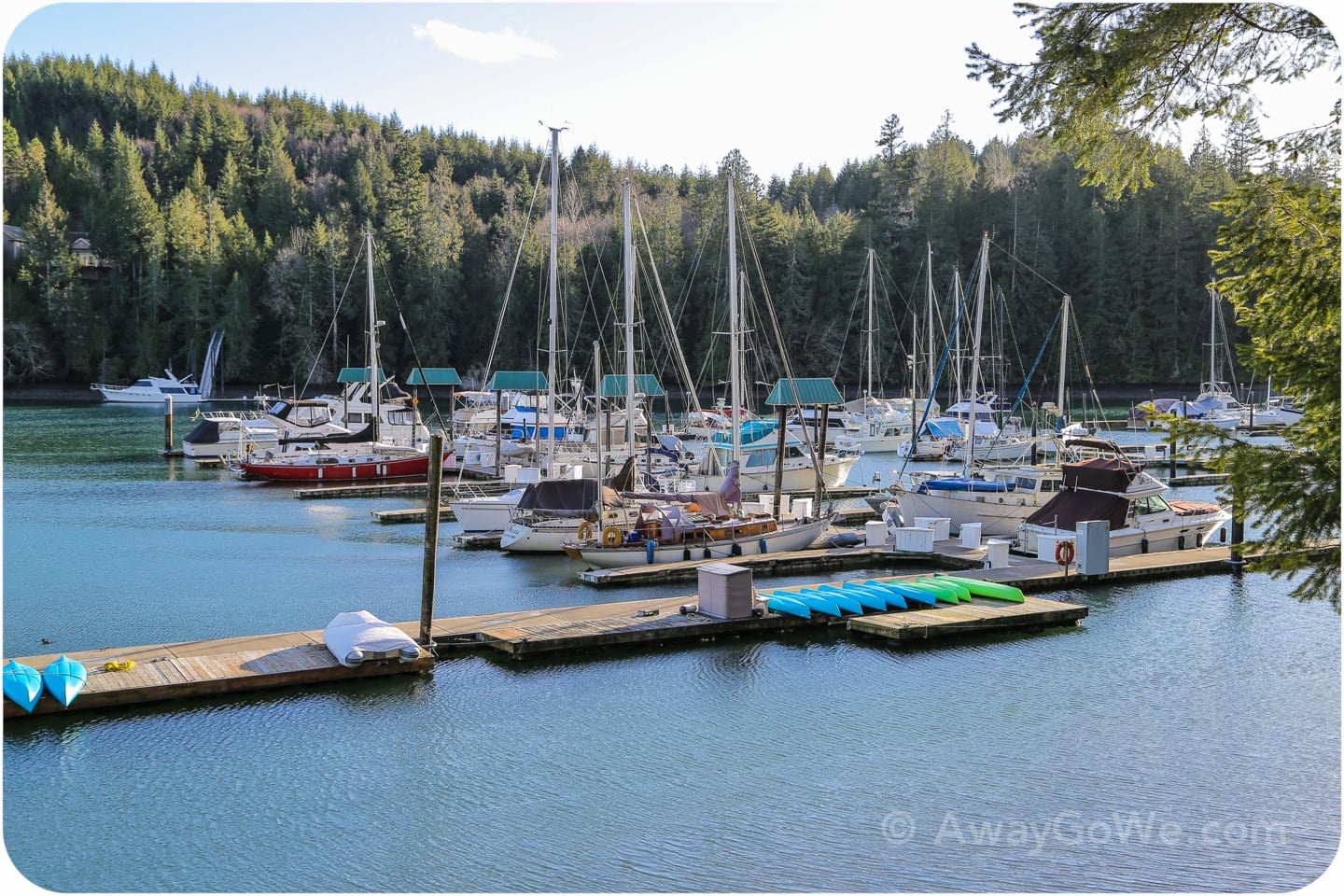
Afterwards, we took a little drive up 101, stopping at a small seaside community aptly named Pleasant Harbor. Pleasant, indeed. They also had a pretty cool little pub with a nice outdoor area above the Marina office.
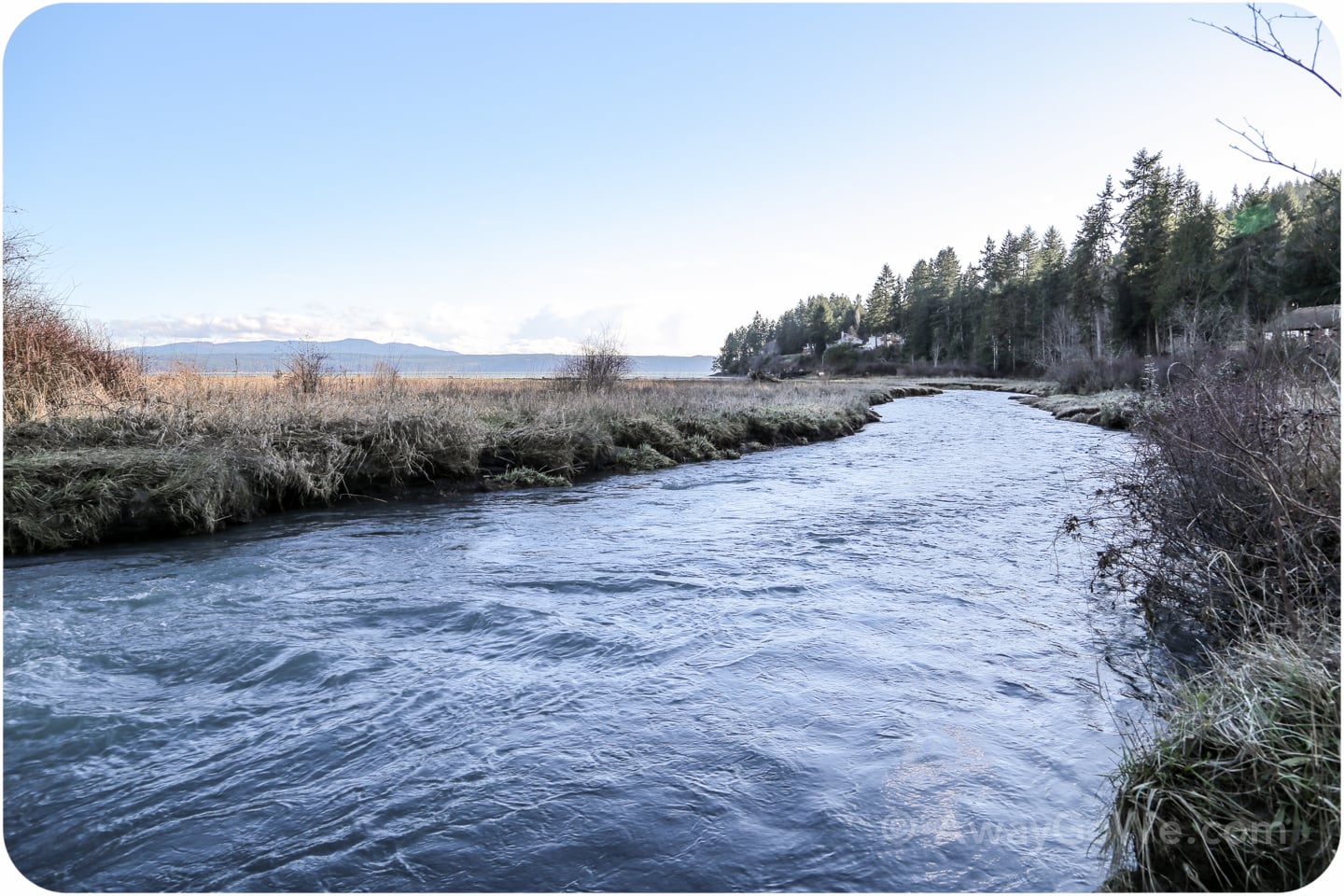
Tidal Trail — Dosewallips State Park
Farther up the road a bit, we stopped off at Dosewallips State Park, which wasn’t much to look at from the main parking lot. However, there’s a fun little tidal trail on the north side of the river that is definitely worth a stop.
Given the frostiness and relentlessness of the sea wind—and that none of us wanted to shell out the parking fee to subject ourselves to said frosty and relentless sea wind for longer than absolutely necessary—we spent about 15 minutes total walking to/from an elevated platform that would have been infinitely more interesting on a warm(er) day…and I look forward to returning on that one day in late August…someday.
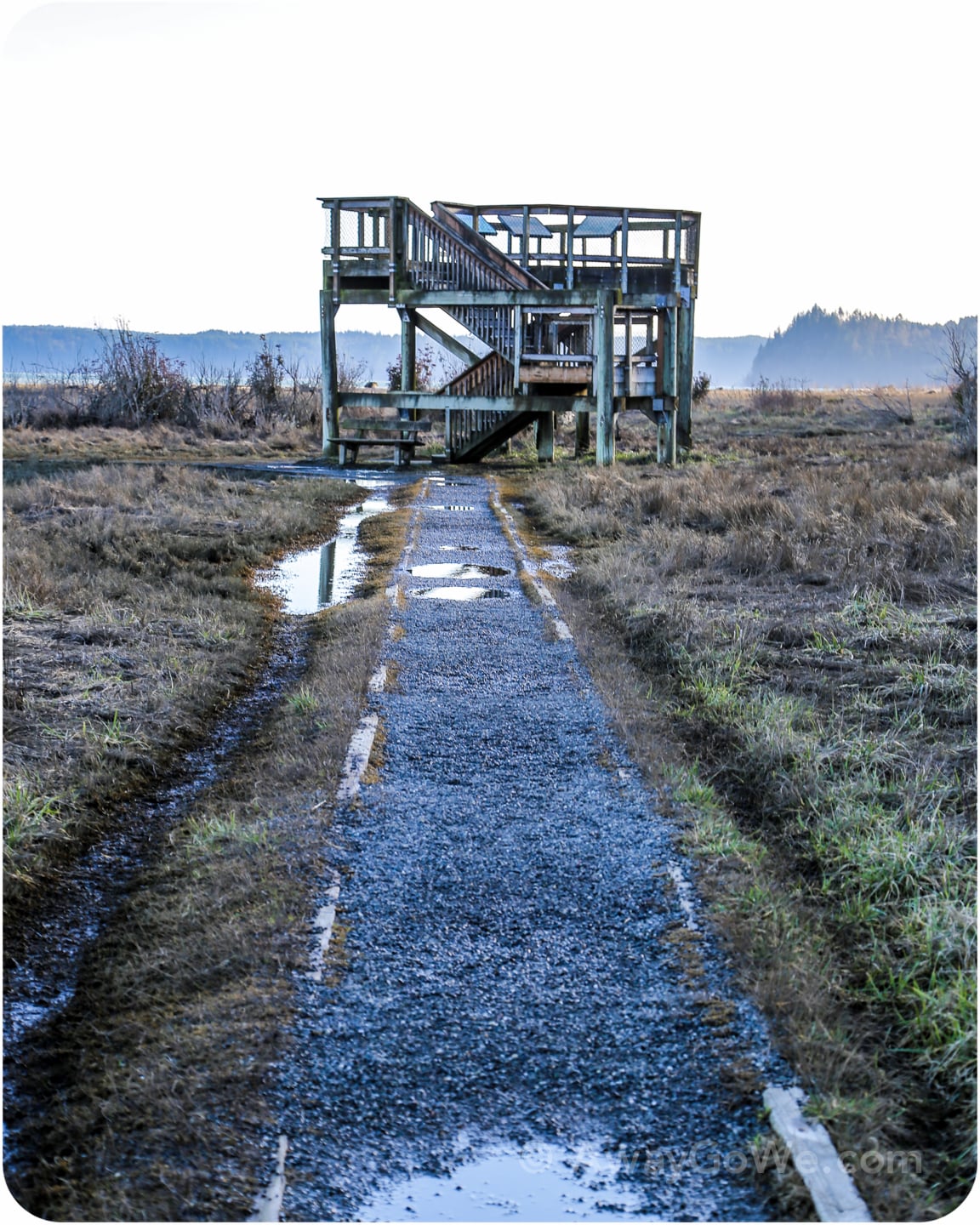
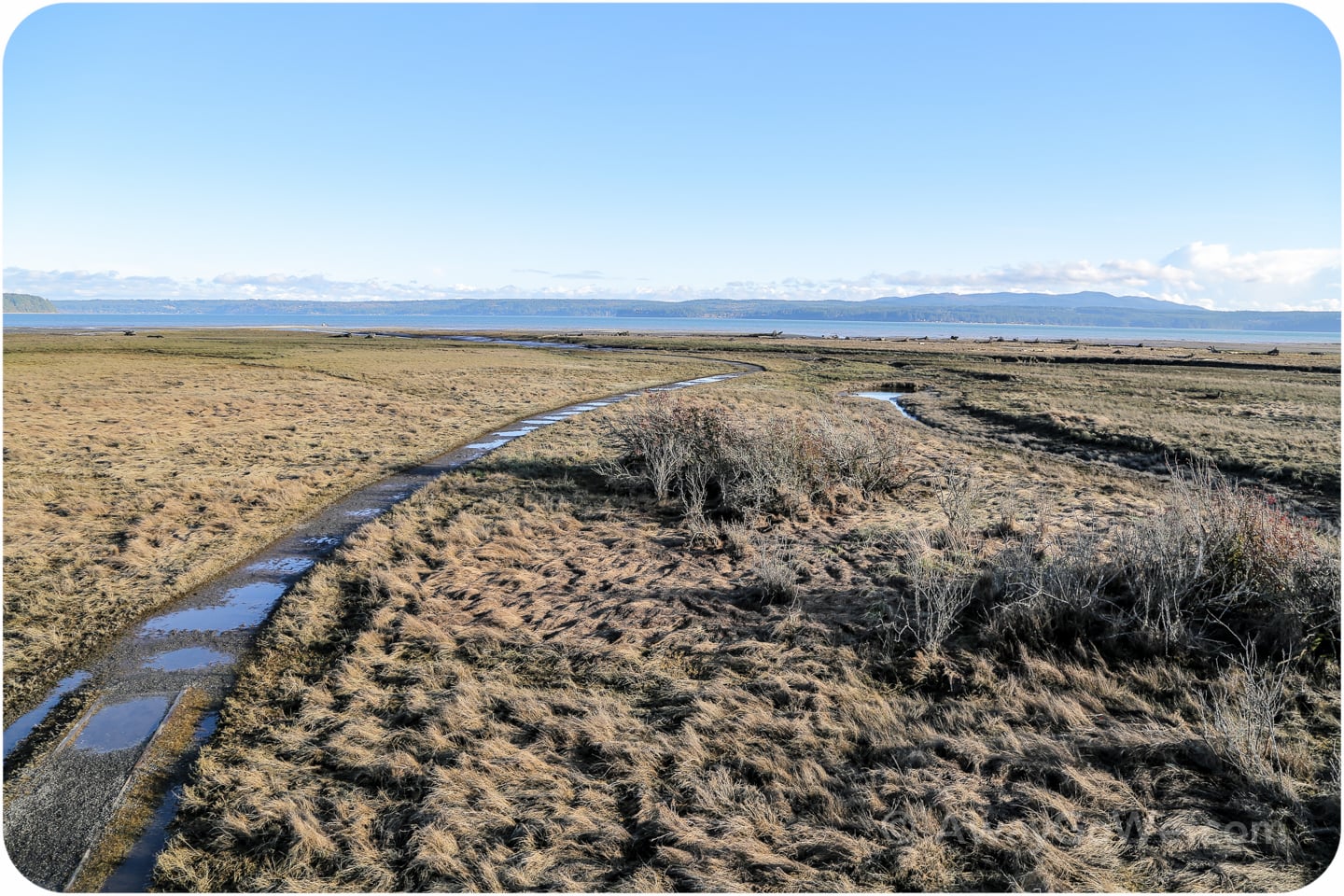
Ever wonder what the story is?
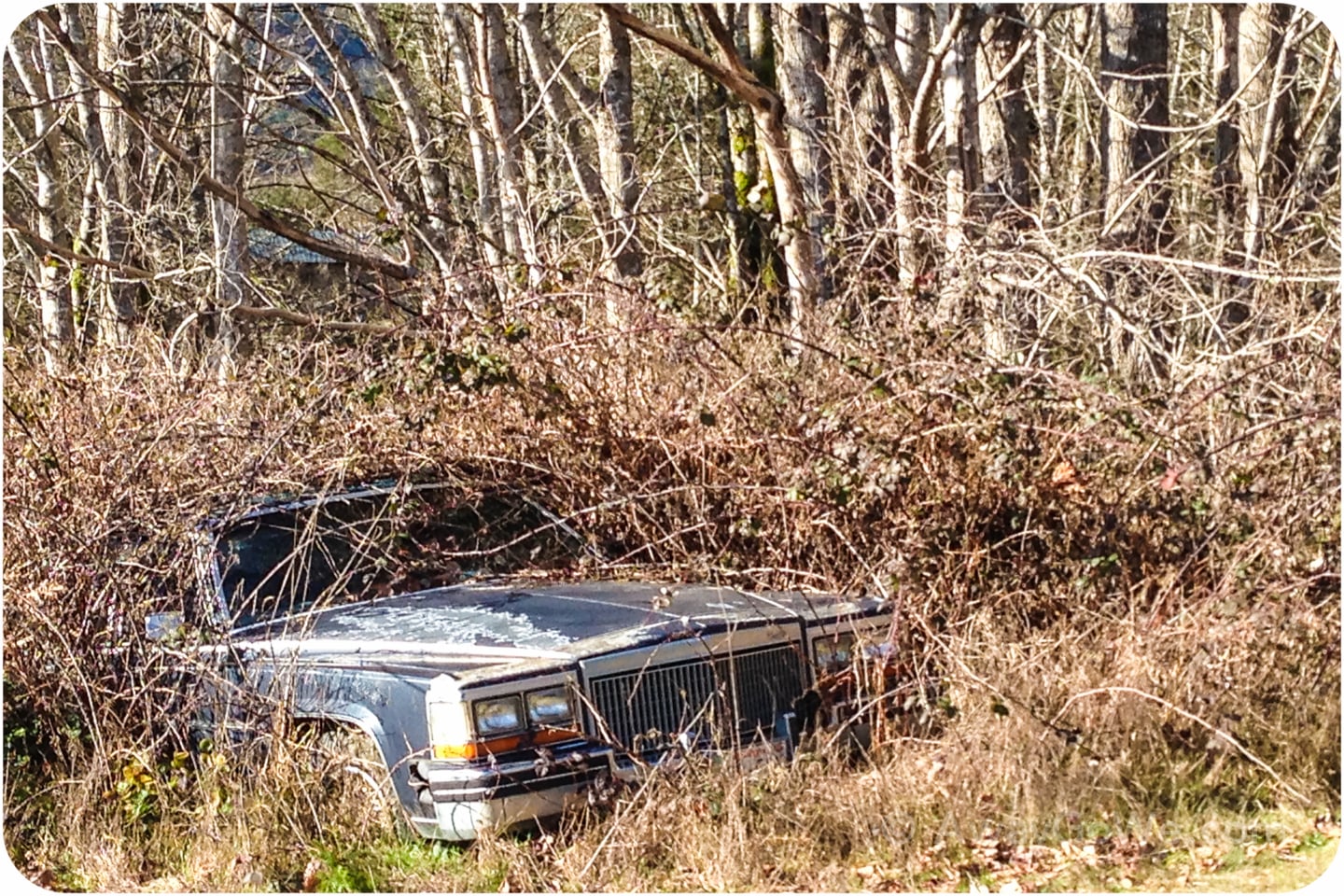
This car is actually on the side yard of someone’s house, right off Highway 101. Meaning someone just sort of said “to hell with it” and let their yard go all hog wild, or worse, maybe just forgot about it. I’d like to see their face when they go looking one day for Aunt Betsy’s big old boat that, “I swear I parked somewhere around here.”
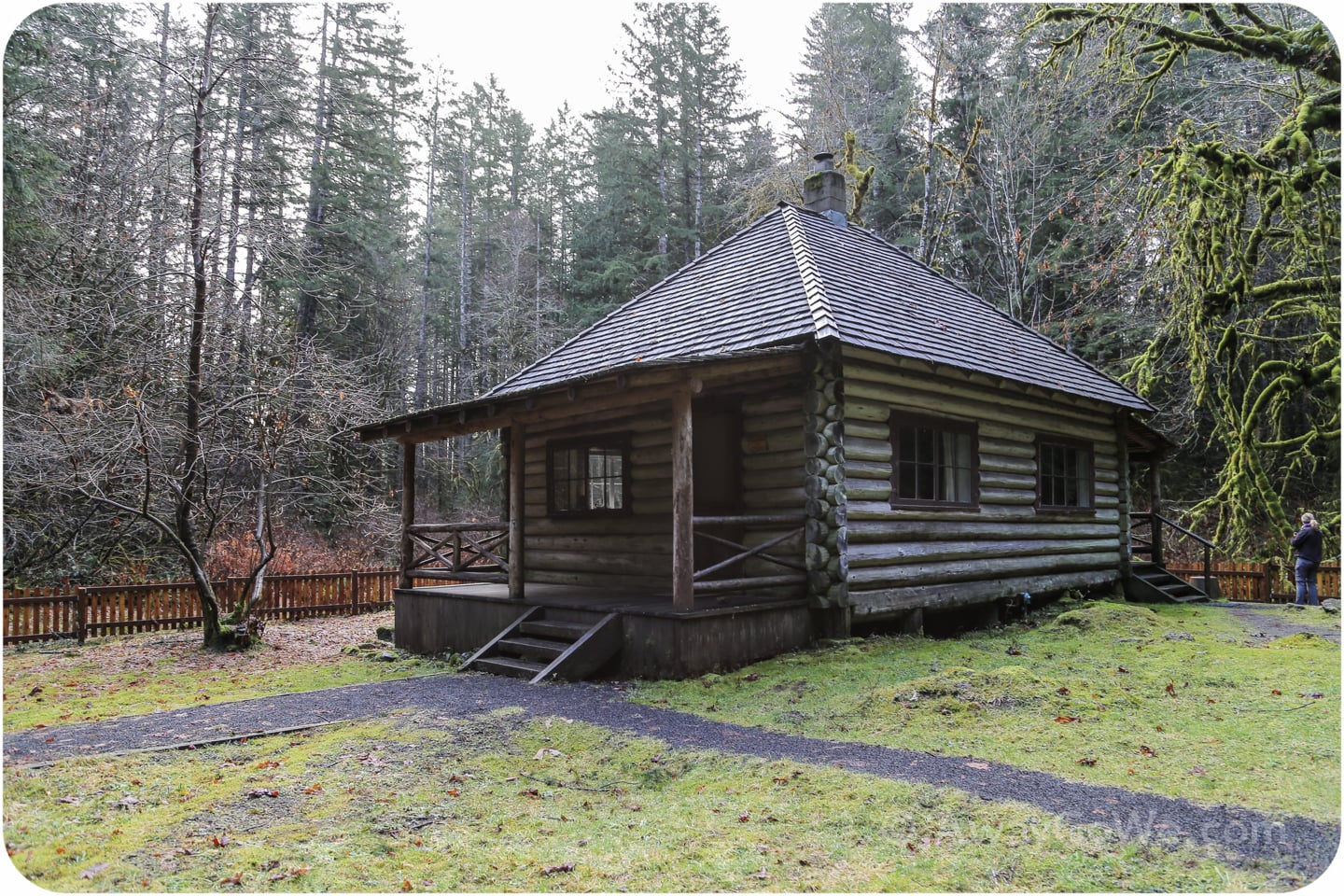
Lori and I really enjoy and look forward to weekends like this when we get to disconnect from the din and distraction of the rest of the modern world.
It’s something we get to practice a lot more outside of the U.S. in the places we often like to travel—where communication infrastructure generally isn’t as developed and expectations are very different.
Back in the U.S., however, it’s an ongoing struggle against the norm to be present and fully invested in the here and now. You really have to work to make it happen here, which is frustrating and in a lot of ways disappointing to us.
Fortunately, there are still places like Interrorem Cabin that make disconnecting and being present easy. Though not remote by any stretch, being here feels like a world far removed.
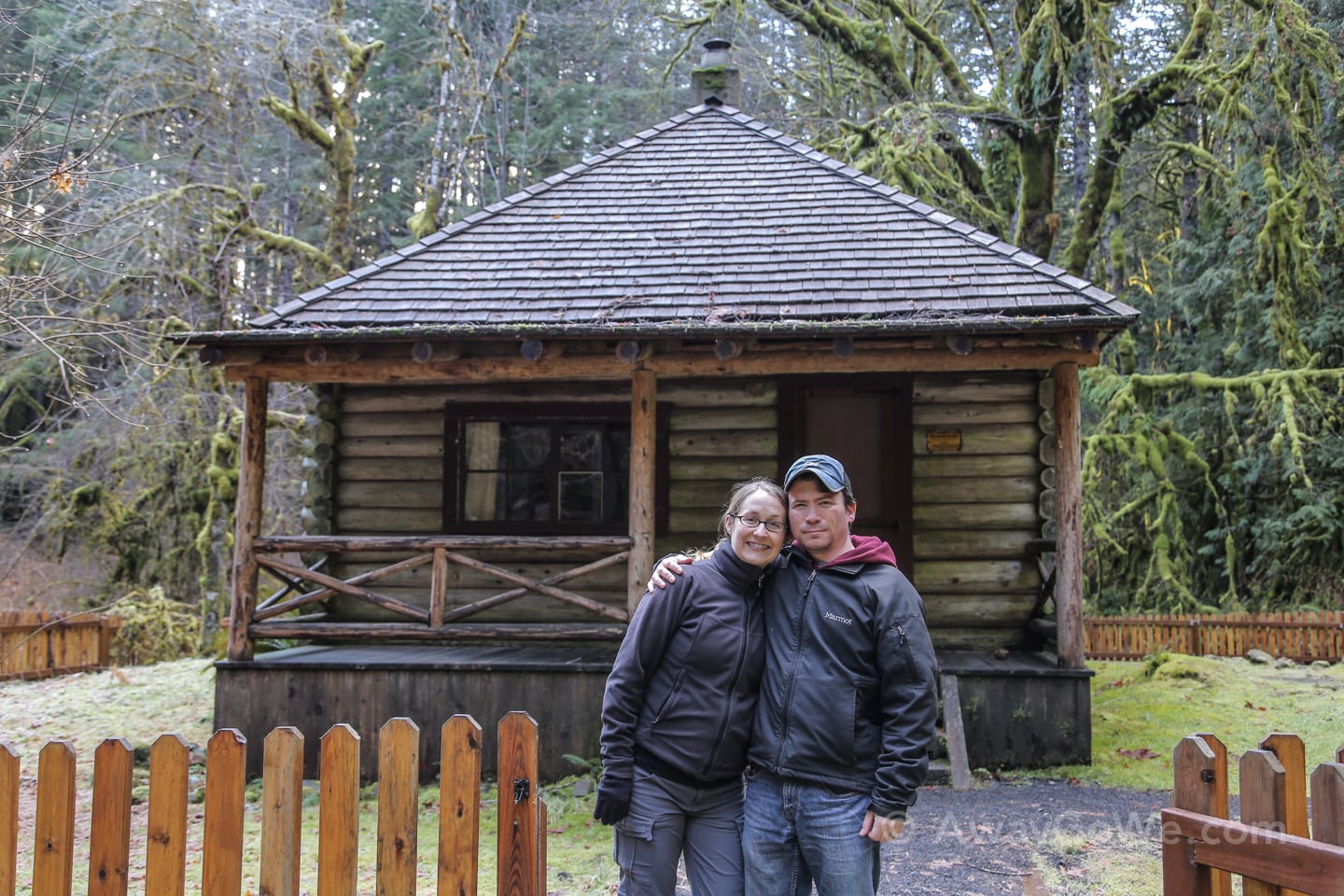
Have You Stayed in Historic Interrorem Cabin?
What did you think? Tell us about your experience in the comments below.
Discover More PacNW Hiking
- 8 Reasons to Visit Cape Blanco State Park & Lighthouse
- Cape Kiwanda, Oregon: A Guide to Hiking & Visiting in 2024
- Portland 4T Trail: Trip Report + What to Expect
- Trillium Lake Hike: Guide to a Great Outing Near Mt. Hood
- Mirror Lake Trail (Oregon): First-Hand Hiking Guide
- Wallowa Lake Tramway: First-Hand Guide
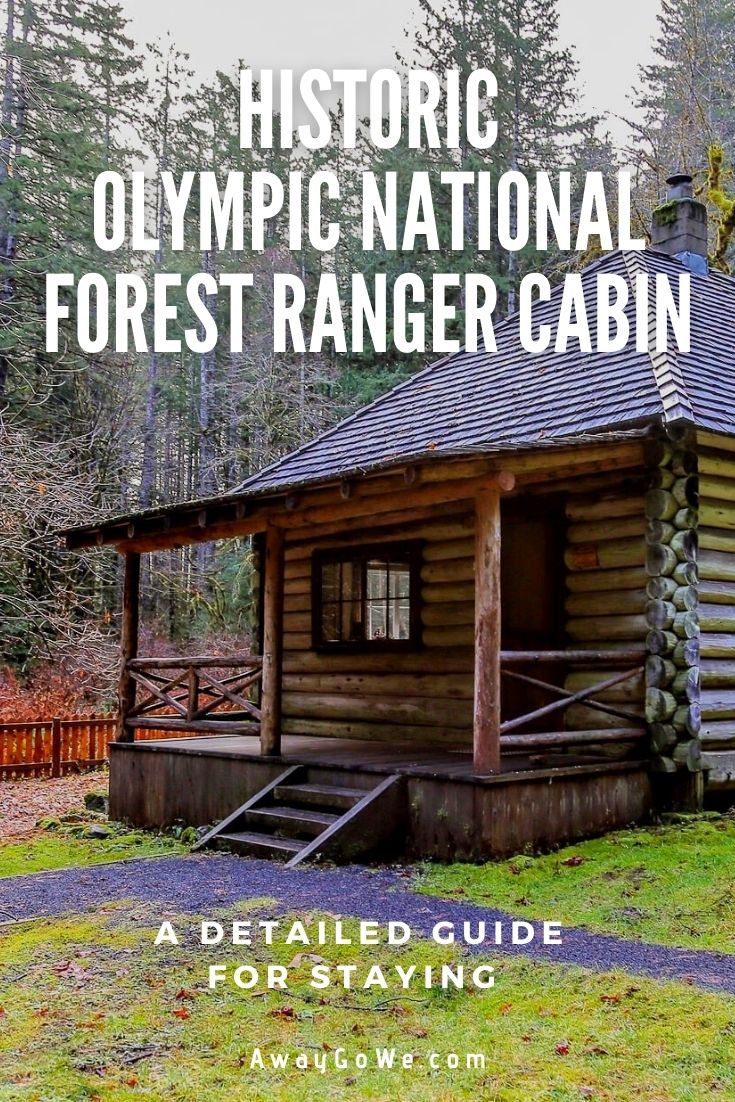
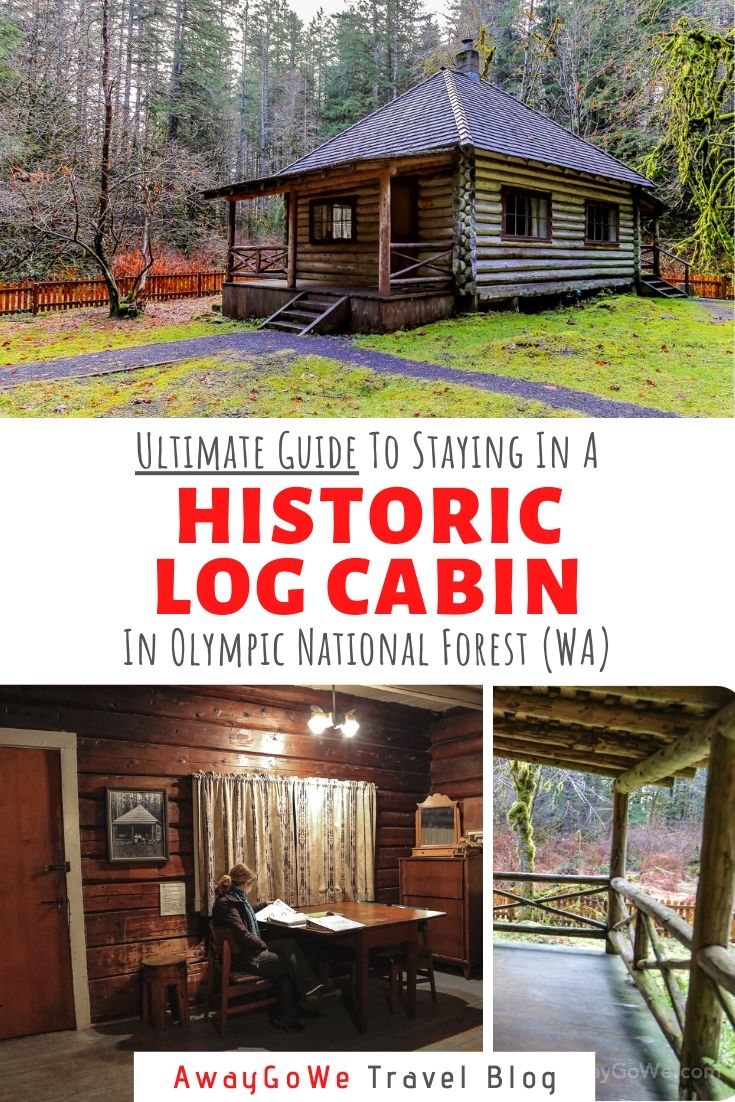
Hi! I booked one night at Interrim cabin, I read reviews of people complaining about mice and mice poop, now I am worried… did you have any issues with mice?
Hi Marina, I can safely say we had zero mice encounters during our visit. With that said, I will say the cabin is very old and rustic, and I could see how it might be both an accessible and attractive place for a mouse or two to take up residence, particularly in the colder months.
Great blog. Thanks for sharing this guide would definitely keep this in mind. The cabin look so cozy too.